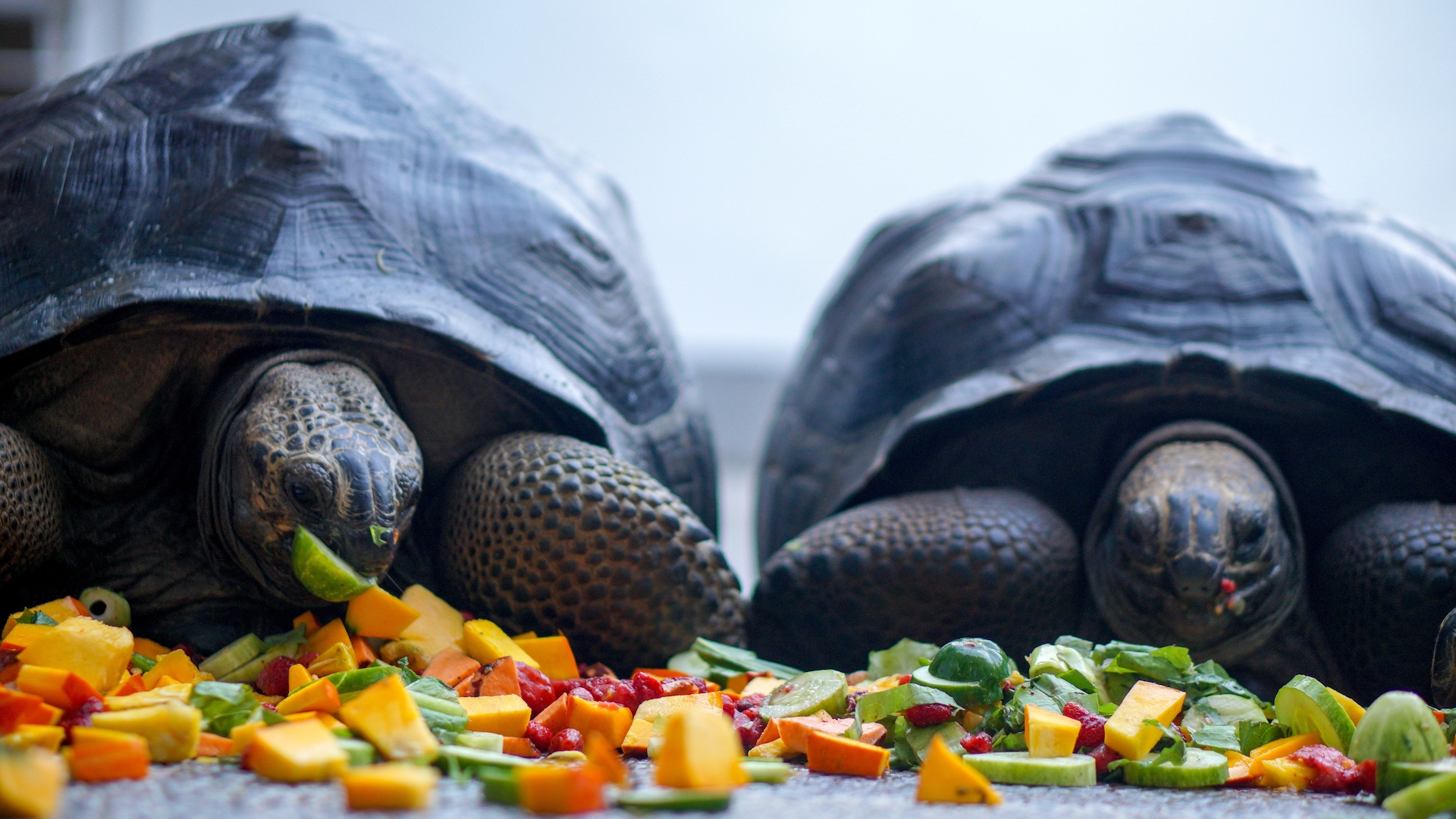
Caring for tortoises, aquatic turtles, and terrapins means getting their meals just right – and that’s not as straightforward as tossing them a few leaves! These cool reptiles have some seriously varied appetites. Some are all about munching on veggies, plants, and the occasional fruit, while others are happy to feast on a combo of greens, insects, and even fish. Whether you’re a proud tortoise owner or taking care of a playful aquatic turtle, understanding what your reptile buddy can safely eat is the key to good pet turtle care.
Let’s take a look at a snapshot of the huge variety of potential foods for your shelly friends, covering everything from crunchy greens, pretty flowers, and garden weeds for herbivores, to protein-packed creepy crawlies for omnivores.
One of our top tips for taking care of pet turtles is understanding the unique diets of aquatic turtles and terrapins, whose nutritional needs and desires are slightly different from those of land-dwelling tortoises. Always consult an expert in Chelonians (the official term for this group of shelled reptiles) if you’re unsure, but with a little knowledge, you can make sure your reptile is getting the right balance of nutrients to grow strong shells, stay active, and enjoy a long life.
32 things pet turtles can eat
1. Turtle pellets
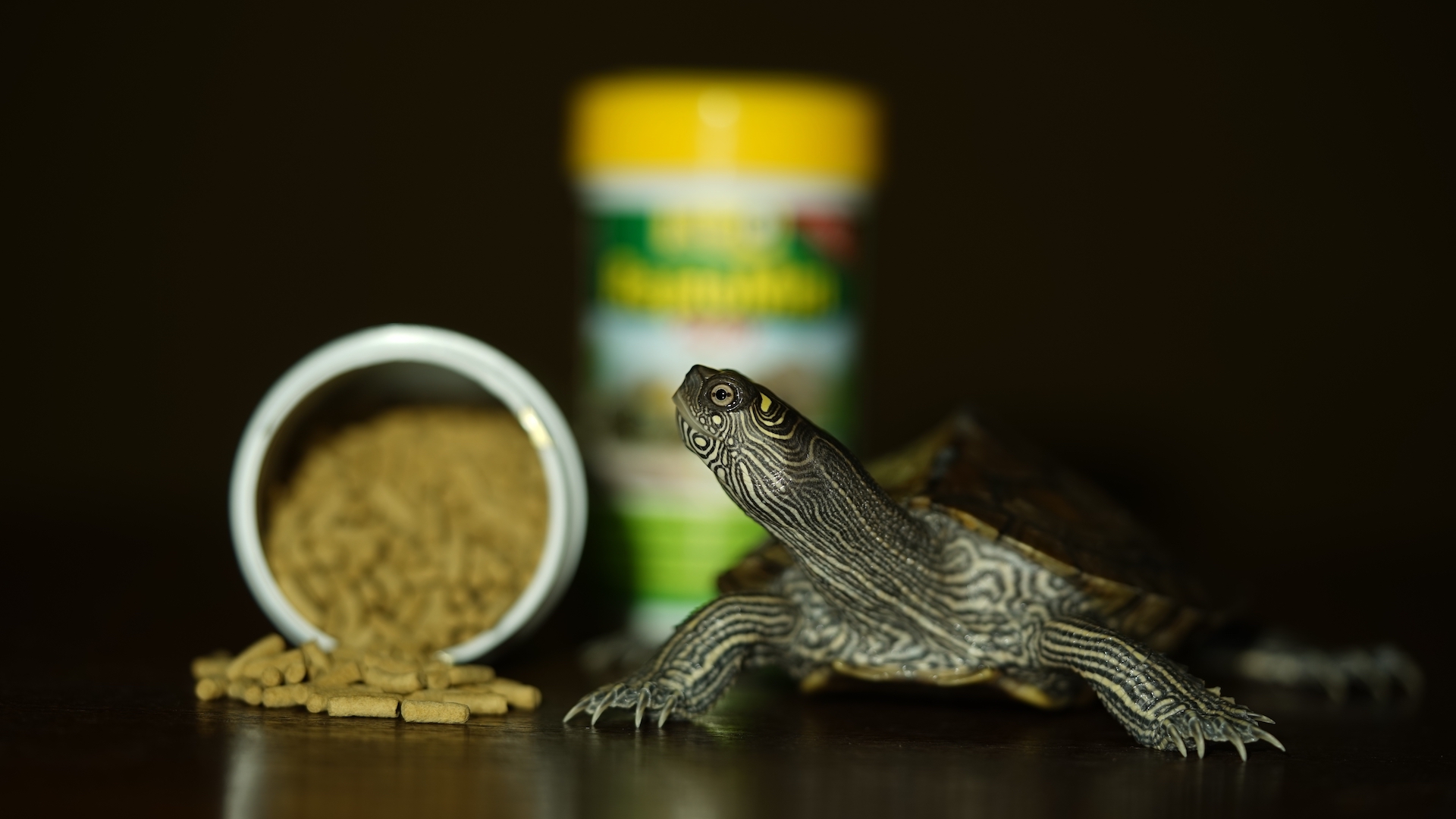
Commercial turtle pellets are the obvious choice of feed. These diets are designed to be nutritionally complete, to meet the turtle’s needs in terms of vitamins, minerals, and micronutrients. The range of this dry food varies so that you can select according to your pet’s need, whether it’s an aquatic turtle or a tortoise, or for hatchlings, juniors, and so on.
2. Scotch thistle
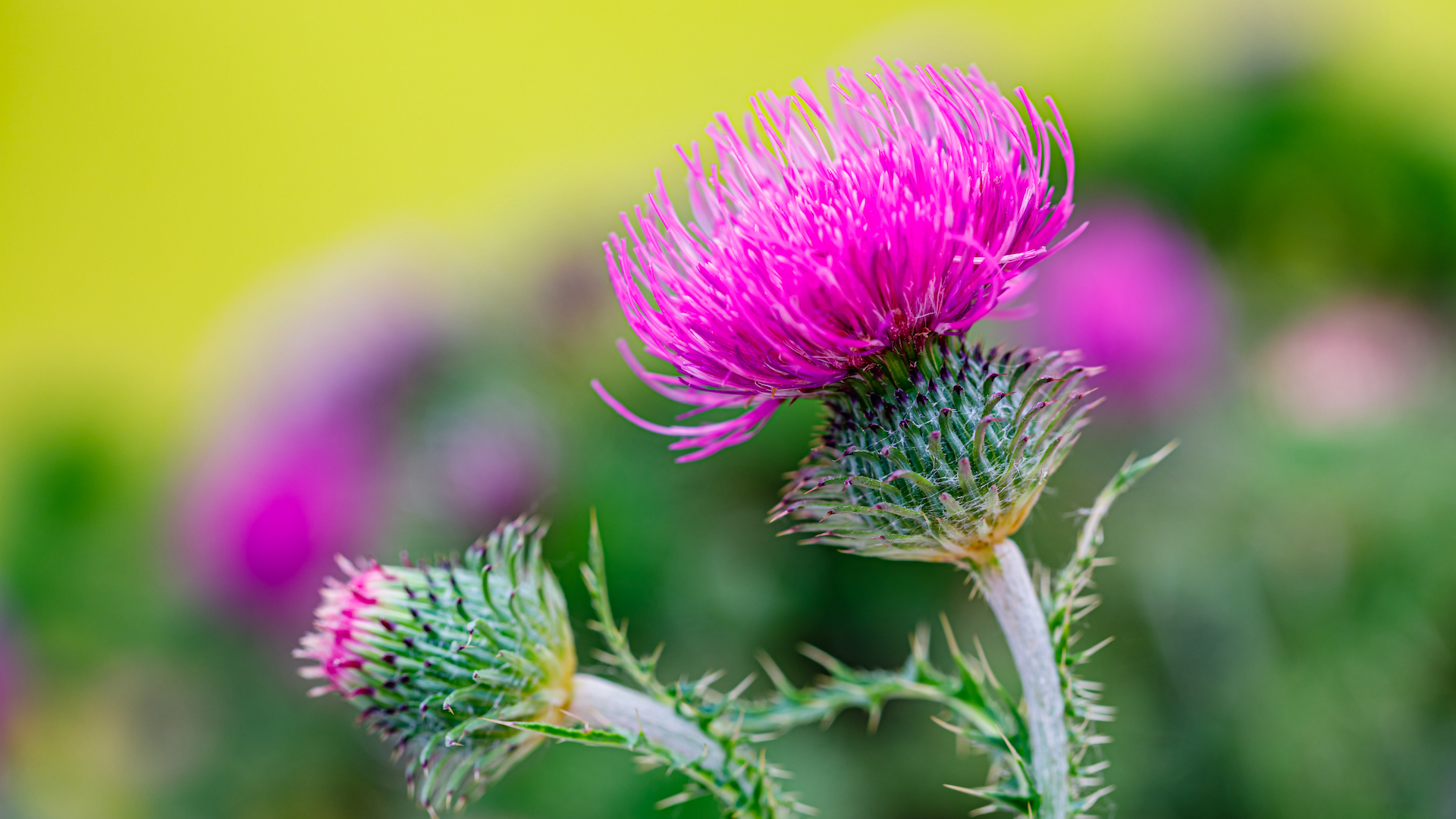
Hardly the most palatable of textures, but Scotch thistle is an excellent source of calcium, potassium, vitamin B, and omega-6. It’s not the best choice for very young tortoises, as the spines may be troublesome so stick to the softer young leaves for them. The older folk will enjoy the whole plant, root, flowers and all.
3. Earthworms
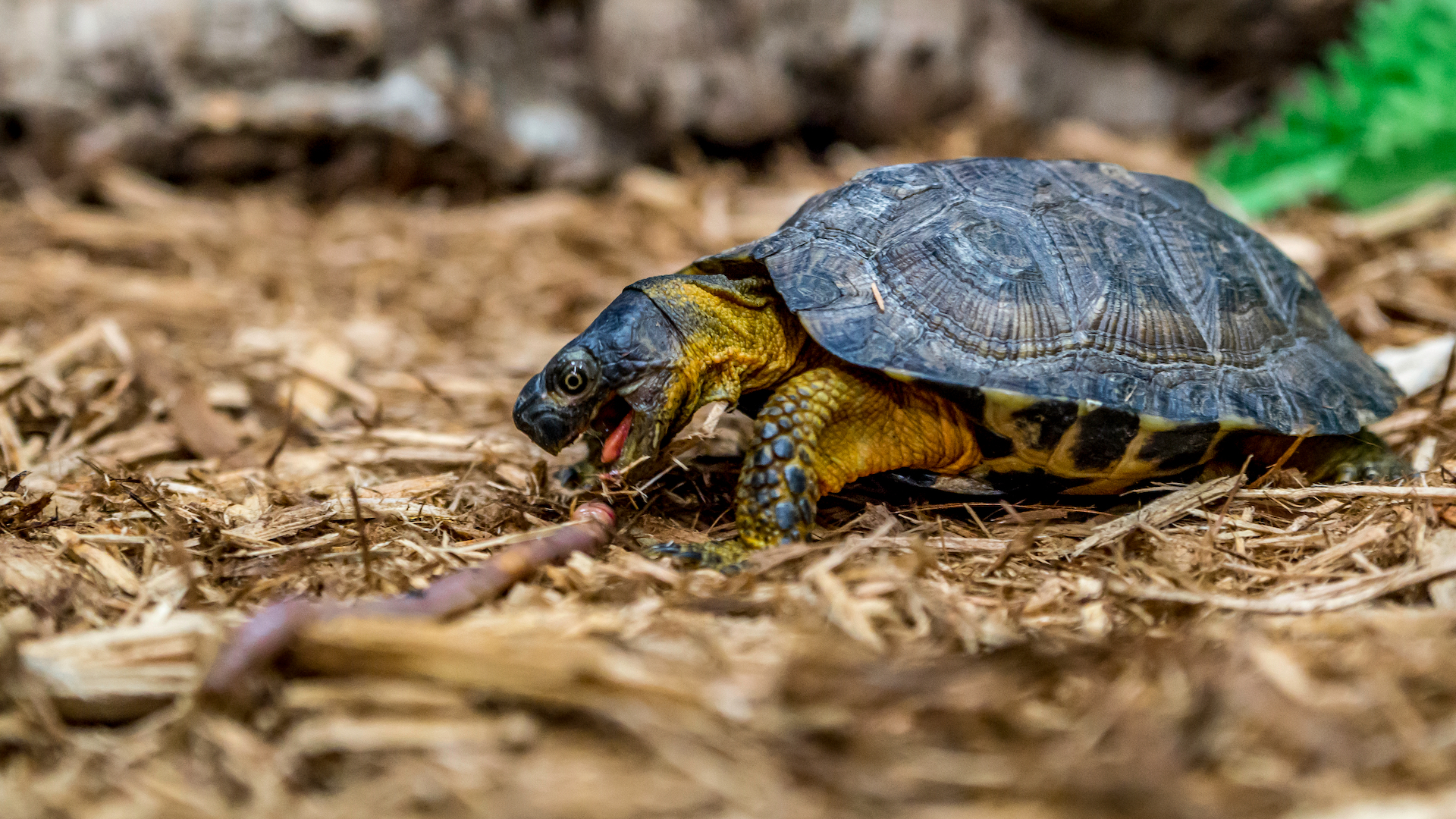
If you have an omnivorous turtle, they will love the blend of fat, protein, and succulence that an earthworm provides. On the other hand, tortoises – or land turtles – tend to be vegetarian, so they are less appropriate, even if they might pick one up when trundling across the yard.
4. Crickets
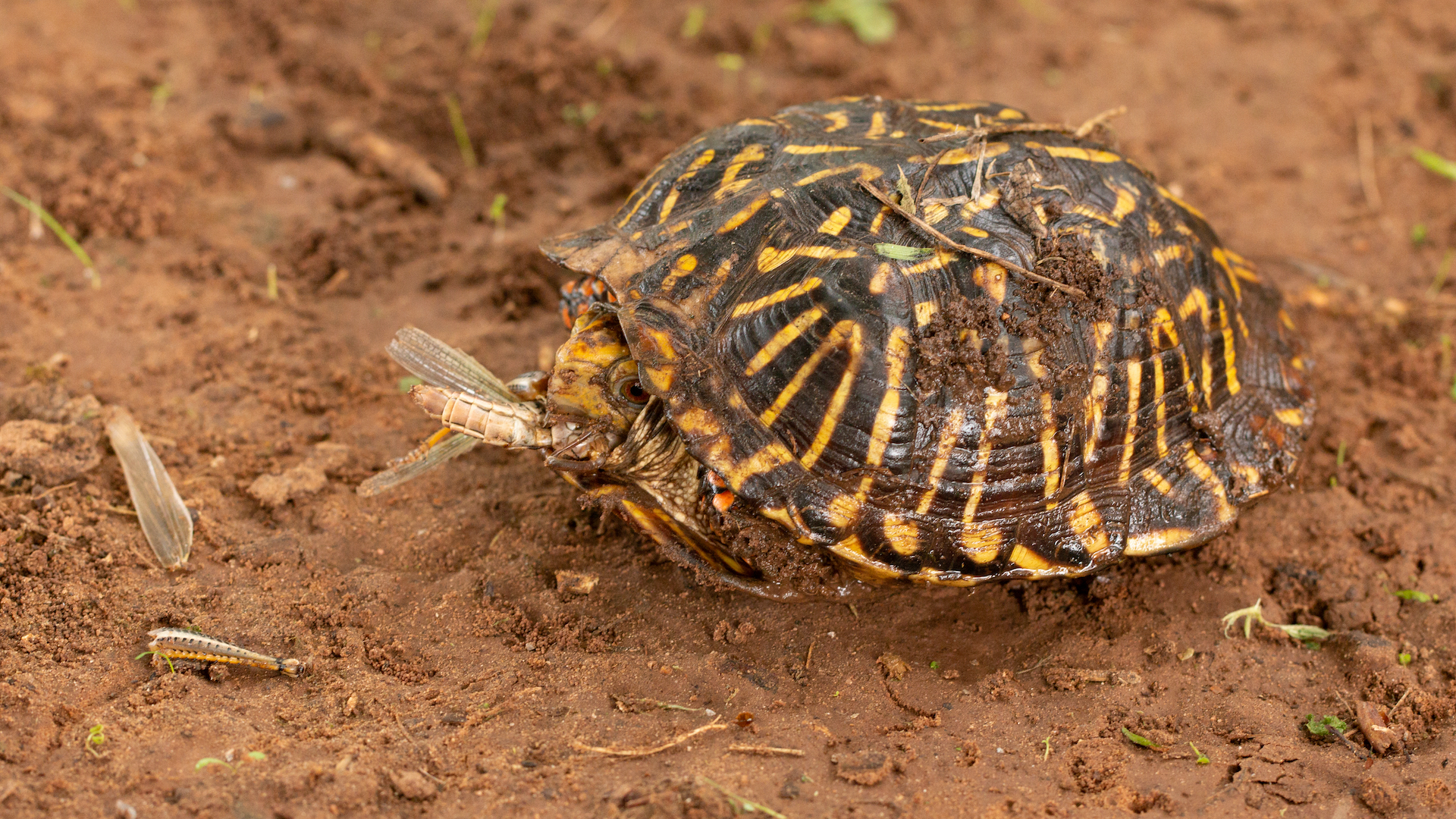
Many turtles enjoy the crunch of a high-fiber, high-protein cricket, which has good nutritional content for the omnivorous brigade. Insects in general are an excellent choice for amphibious turtles, as enrichment as much as for their dietary benefits, such as boosting their digestion.
5. Blackberries
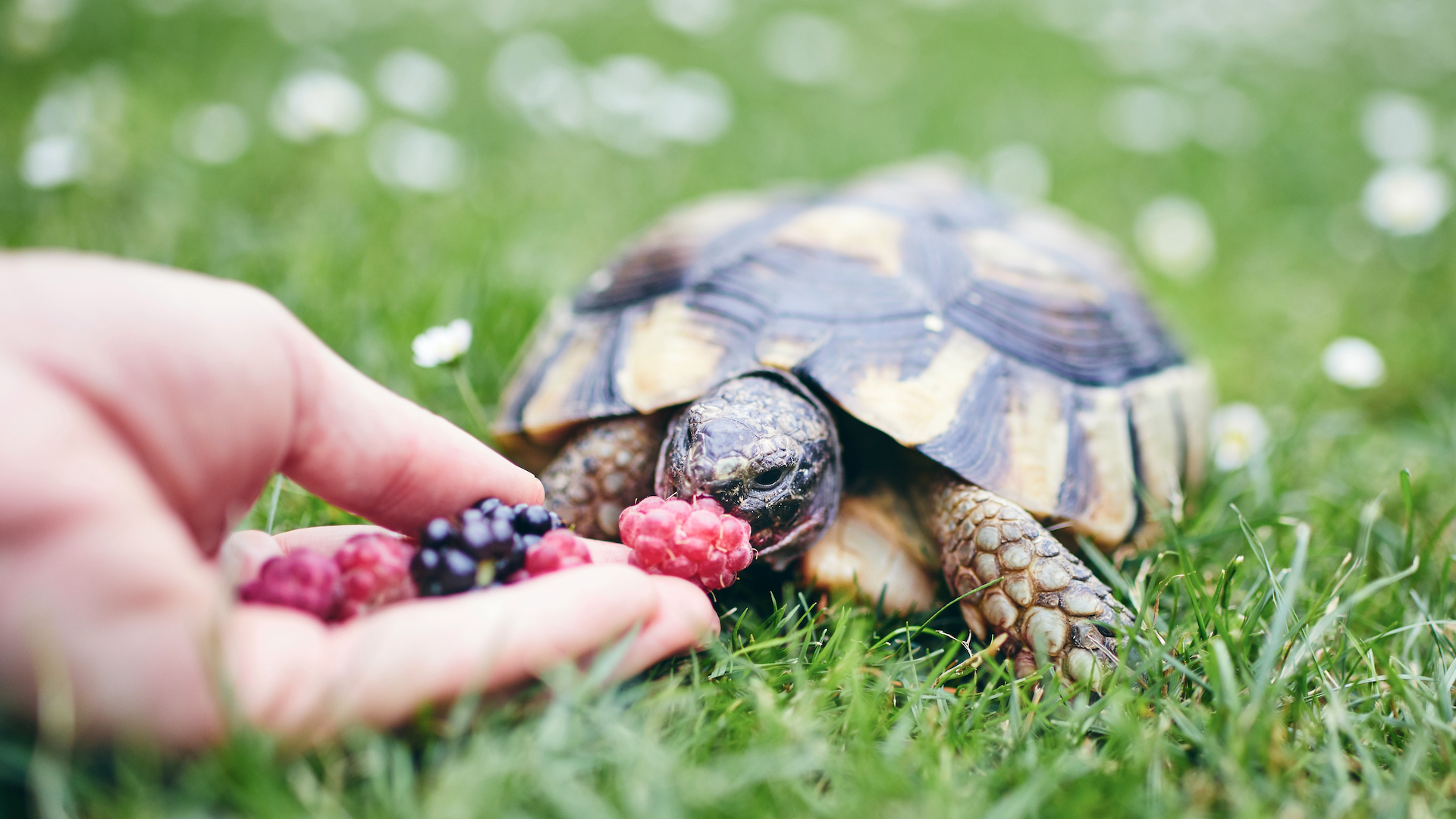
Blackberries are a popular treat for many of fruit-eaters, although the berries themselves should be fed sparingly as they are high in sugar, and they are not suitable for all turtles and tortoises. They do contain useful vitamins. Bramble leaves are fine to feed in moderation, though not every turtle loves the taste.
6. Kale
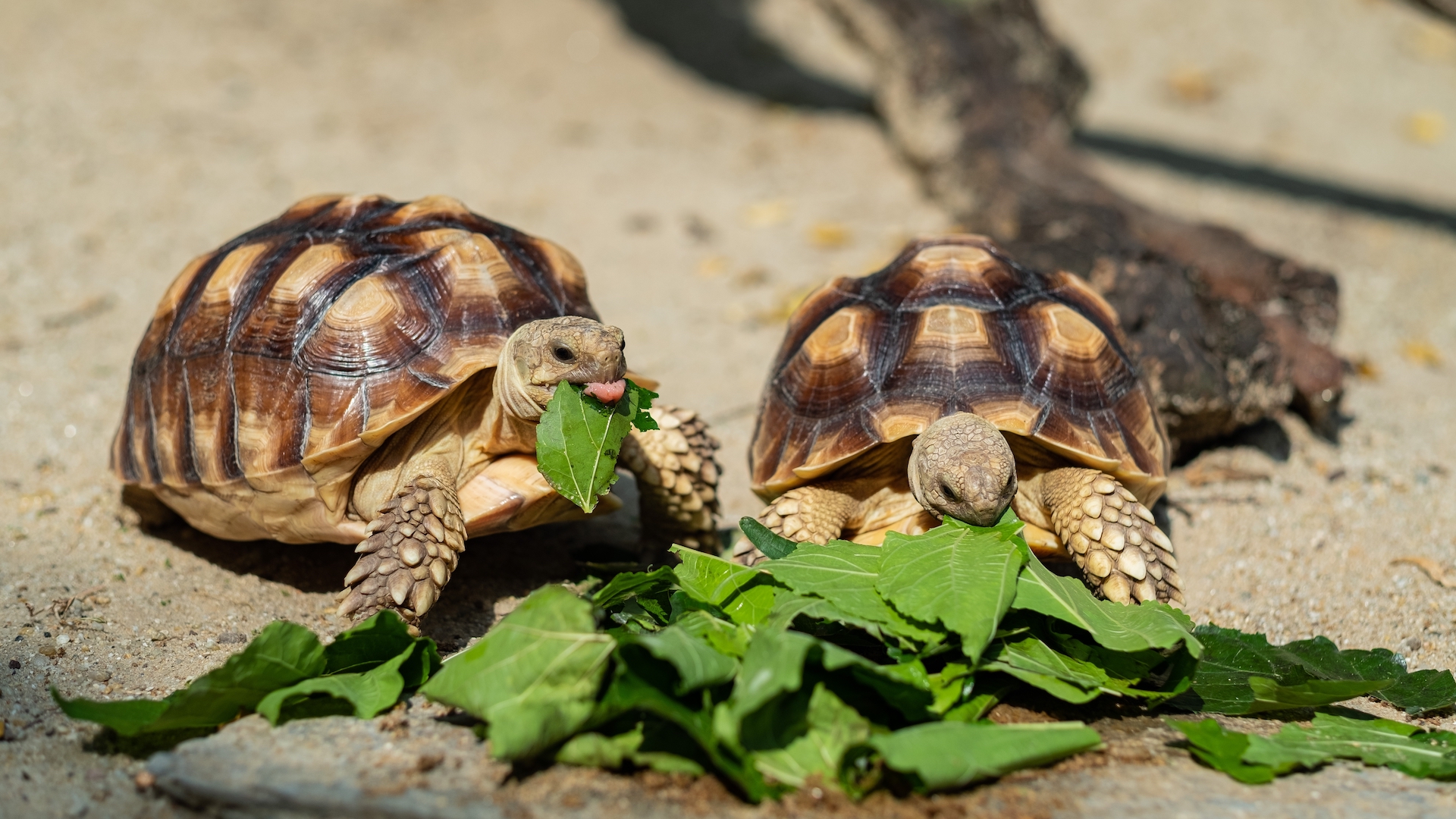
Dark leafy greens such as kale are often feted as excellent turtle food, as they are highly nutritious veggie sources, packed with vitamins and minerals. However, it should be fed in moderation as it can cause digestive upset.
7. Pansies
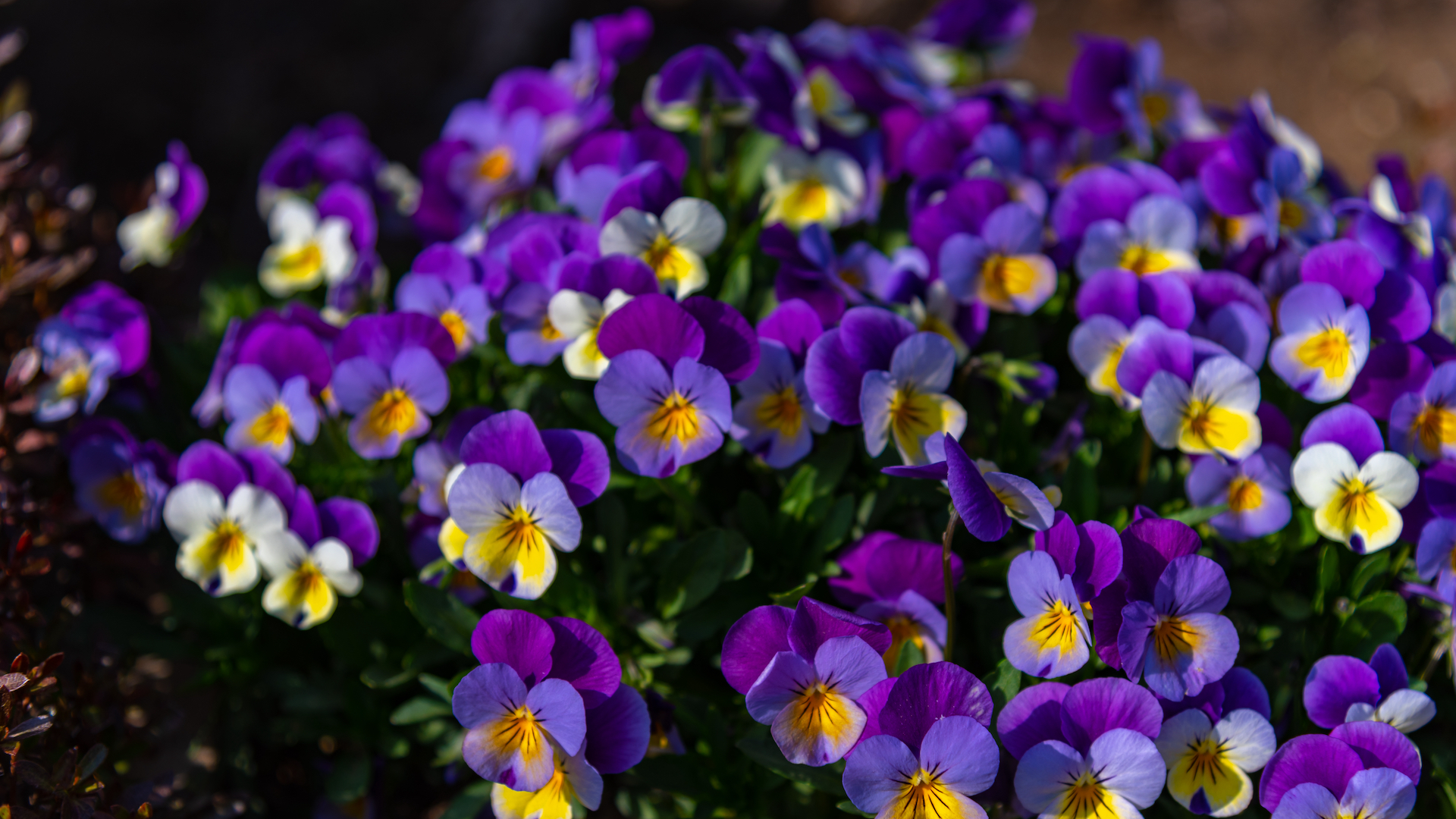
The colorful pansy – leaves and flowers – is suitable for all tortoise species. However, don’t feed them plants recently bought from a garden center as they may be sprayed with harmful insecticides. Instead, wait for new growth – these are a serious turtle delicacy.
8. Dandelions
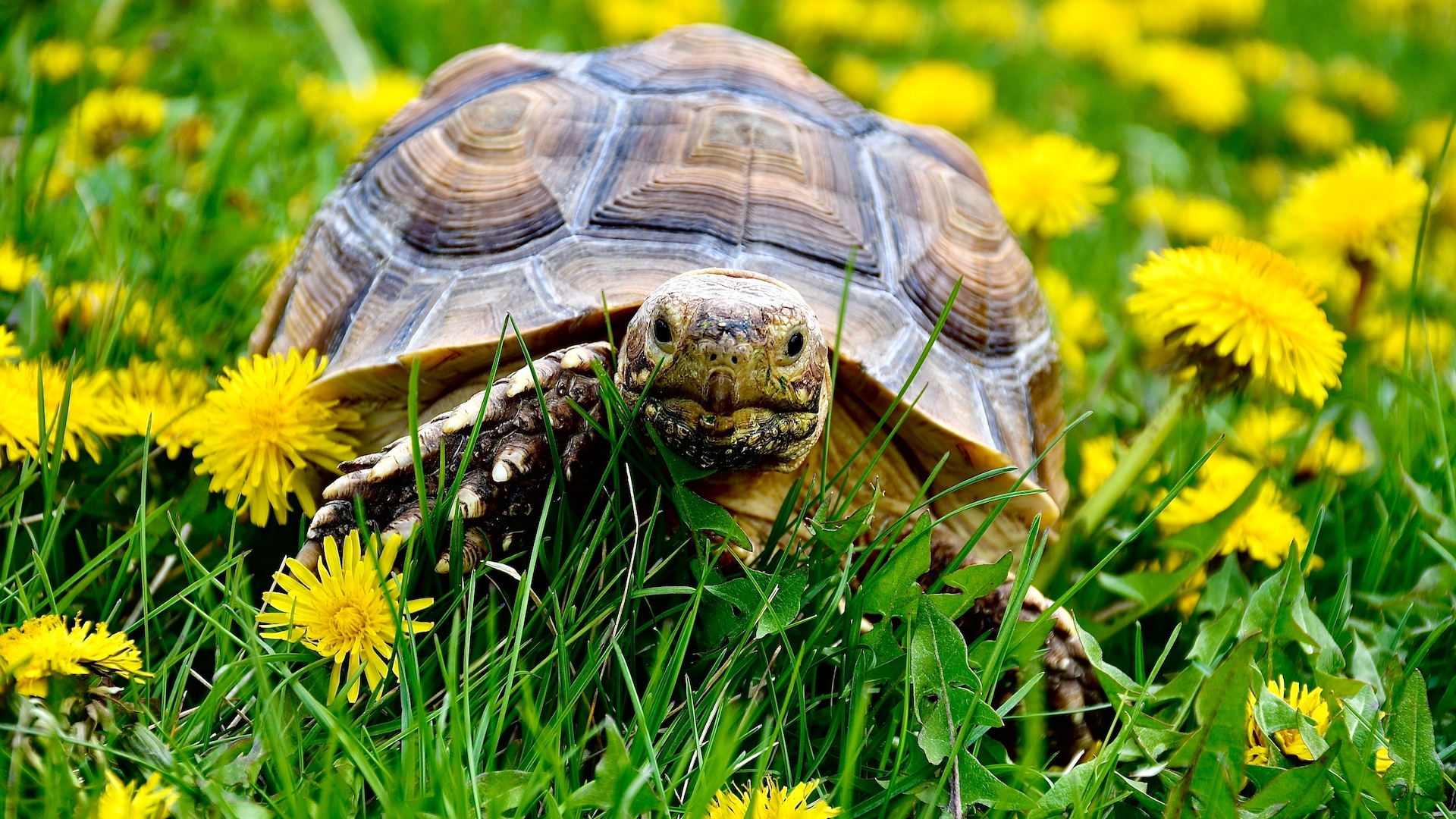
Dandelions – flowers and leaves – are often listed as safe for turtles to eat, and they provide plenty of vitamins and fatty acids. However, they are high in oxalates, so don’t let your tortoise binge on them. More suitable are the similar-looking yellow flowers hawkbit (or “false dandelion”) and oxtongue.
9. Mealworms
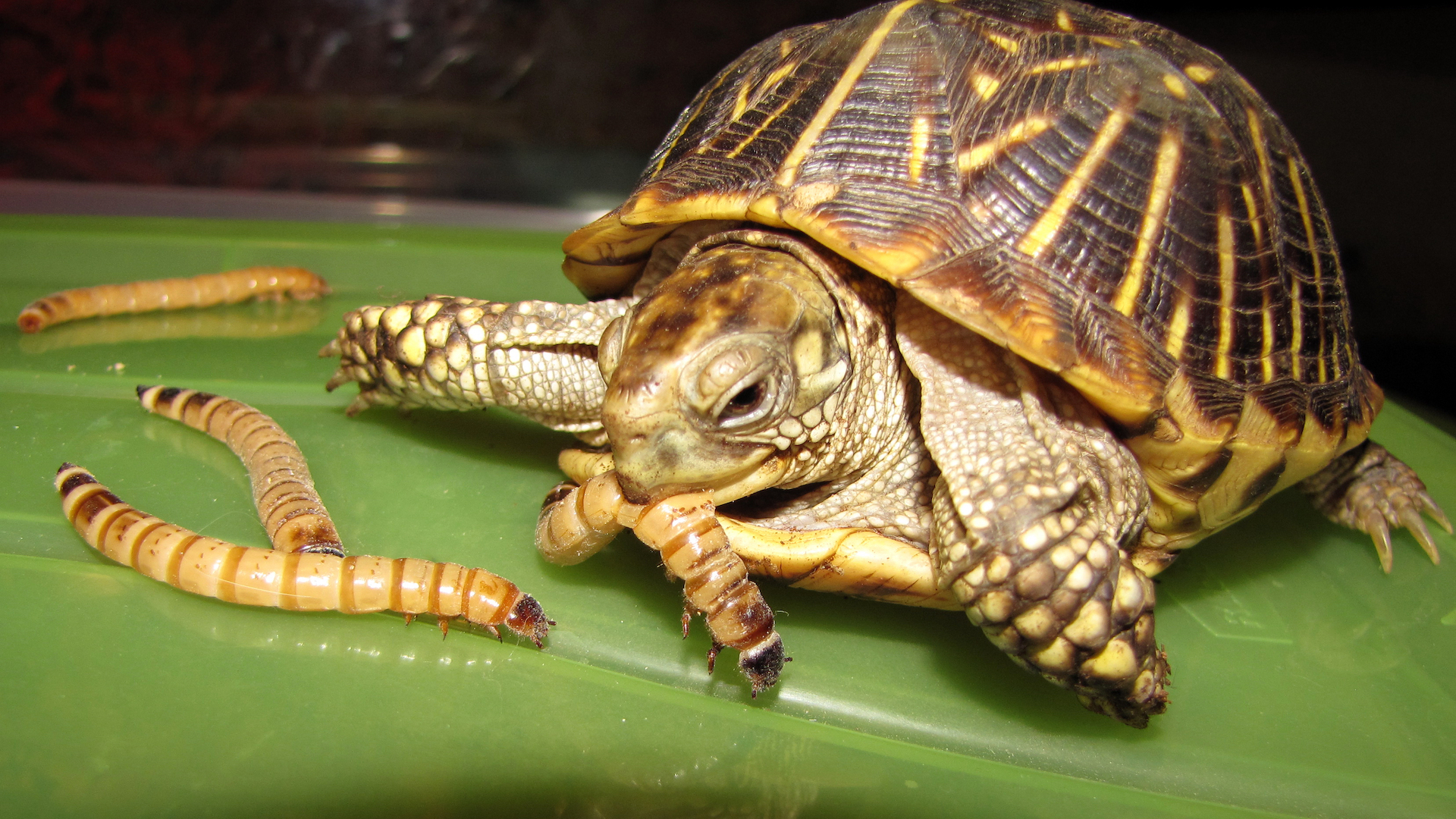
For omnivorous turtles, mealworms provide protein, fiber and fat, as well as being rich in amino acids. Don’t pick them out of the garden though; dried mealworms are inexpensive from the pet shop, and a safer bet as they are much less likely to harbor disease.
10. Melon
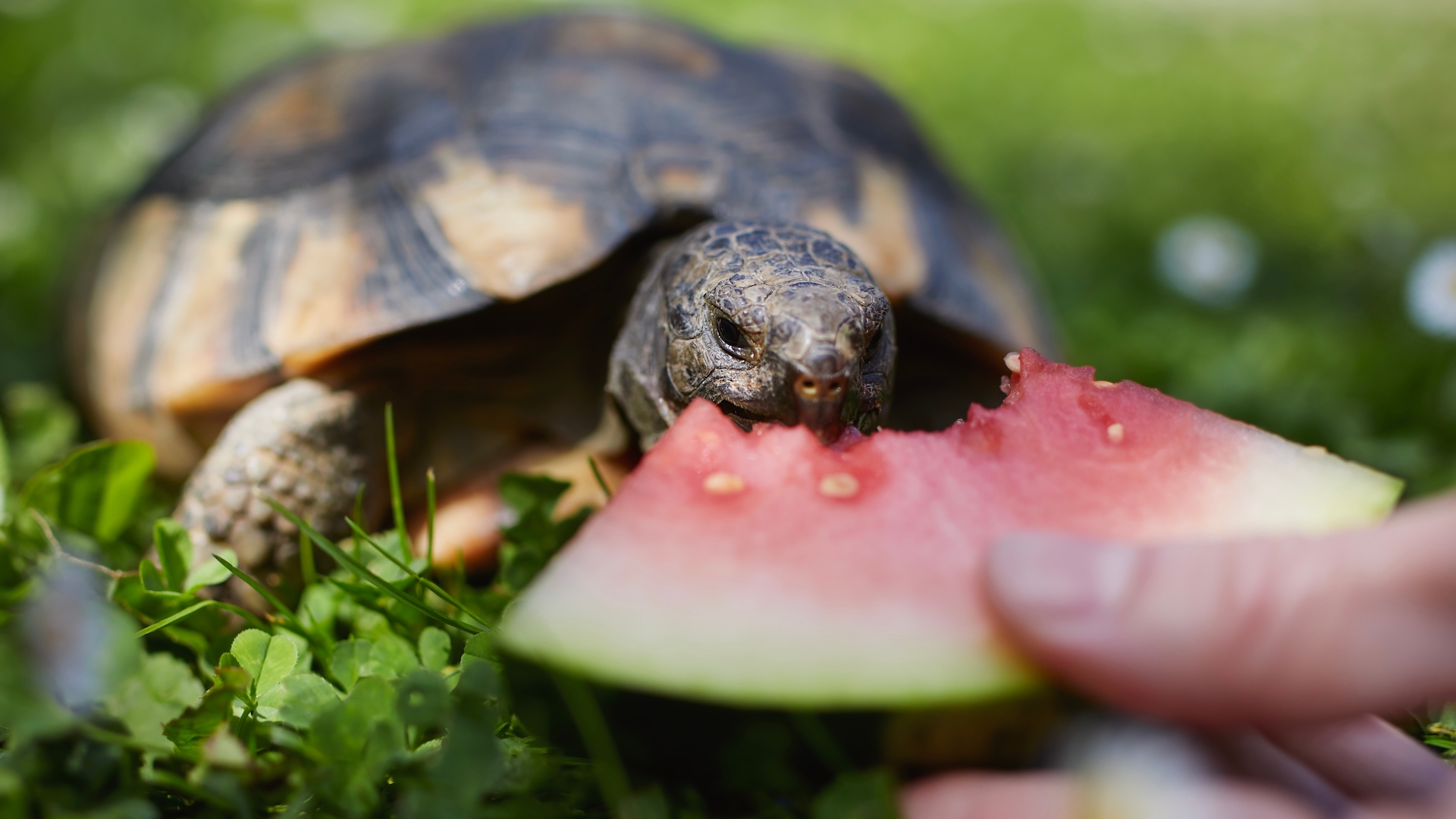
Melons – canteloupe, watermelon, honeydew, among others – are a huge treat for many types of turtle, although not all species can handle the high-sugar content. Like us, they often have a sweet tooth (or, being toothless, more accurately “sweet beak”), and these juicy morsels should be reserved as special titbits, not a main part of their diet.
11. Guava
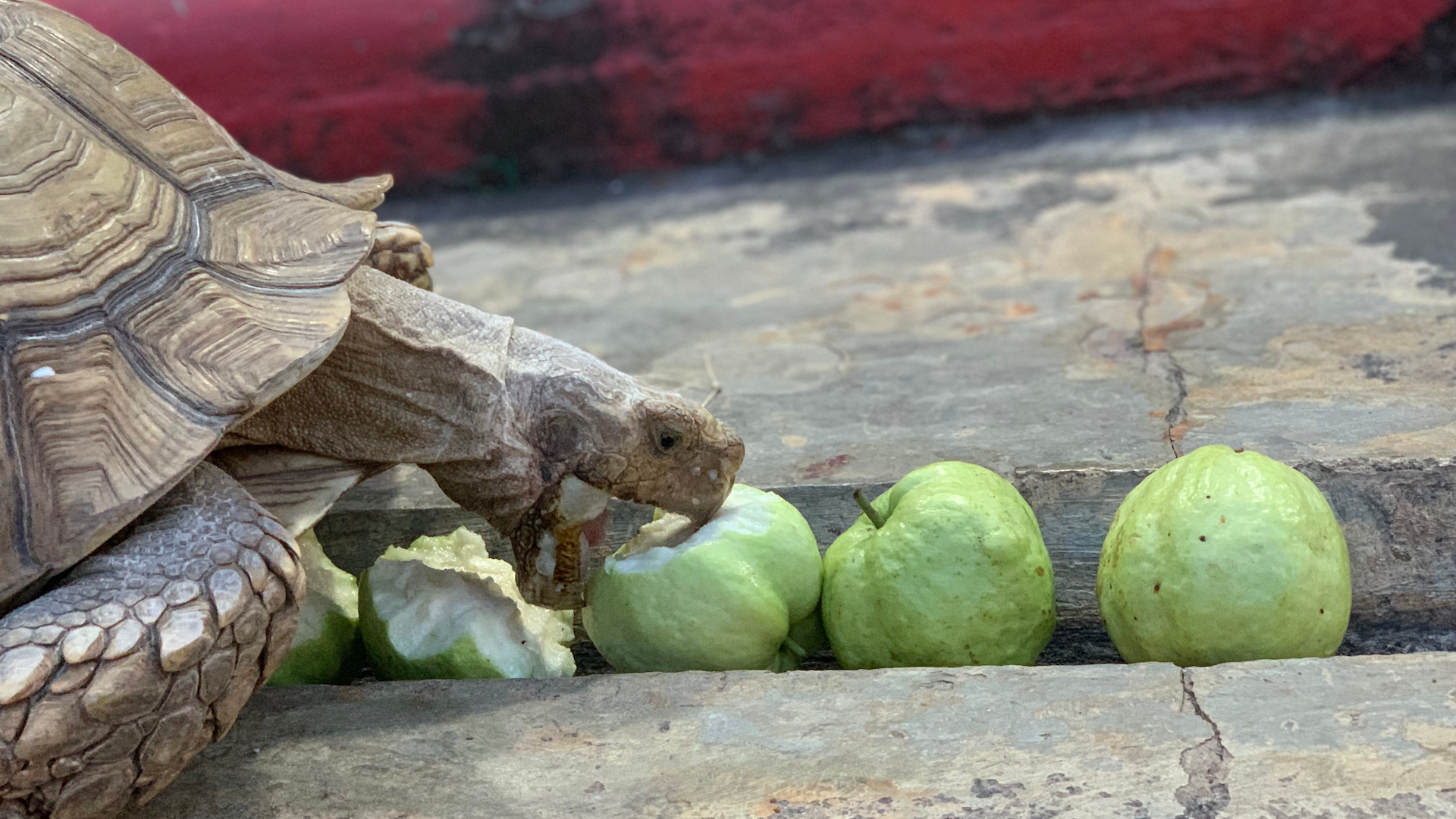
Fruit-eating tortoises, such as box turtles, tend to love the sweet taste of guava and can eat it in small amounts.
12. Lambs’ lettuce
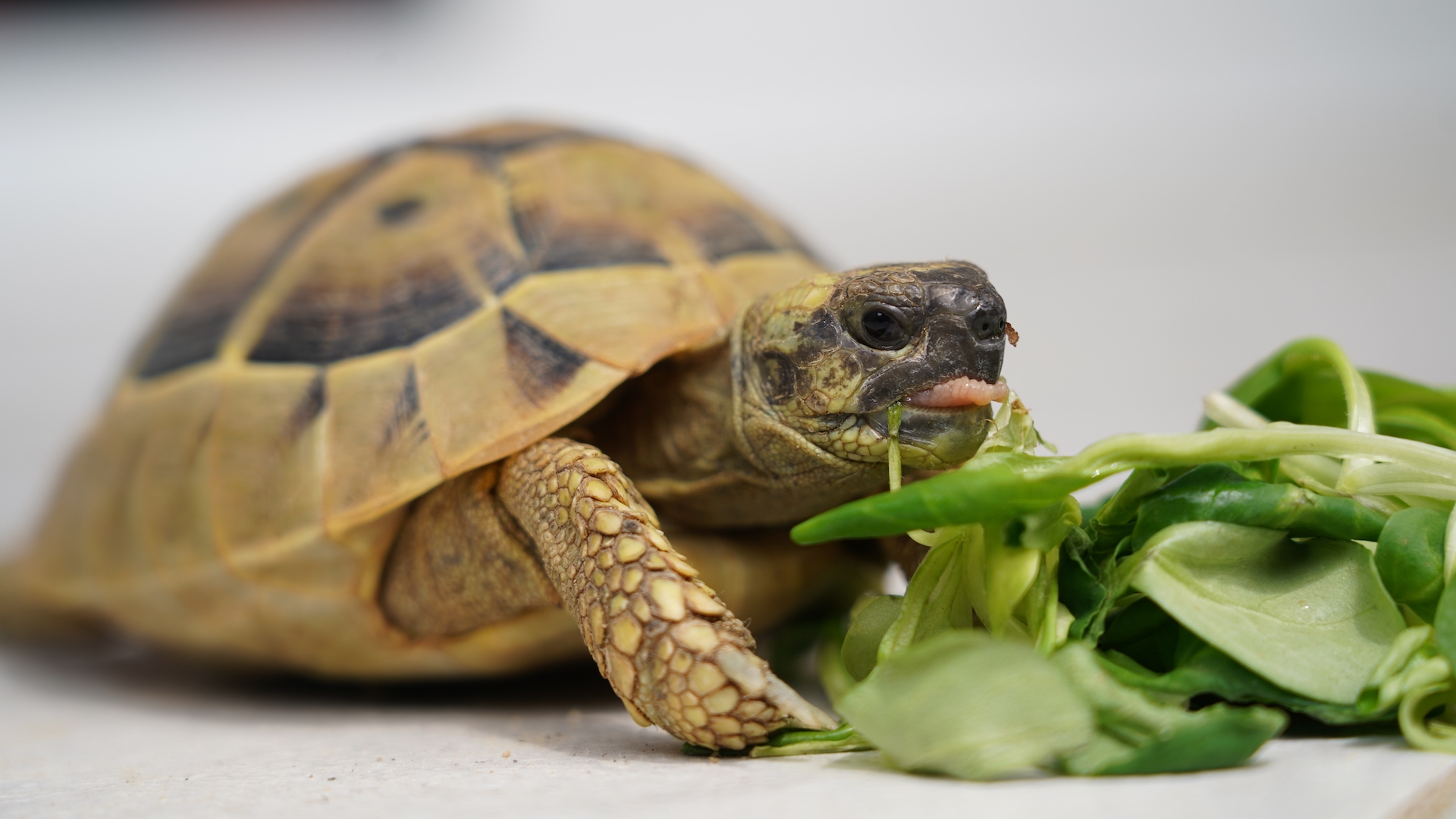
Often found in salad bags, but also a common weed growing in the wild, lambs’ lettuce is fine to feed tortoises as part of a mixed diet. While iceberg lettuce has little nutritional value, these darker leaves are more beneficial. It also floats well in a tank for our aquatic friends.
13. Banana
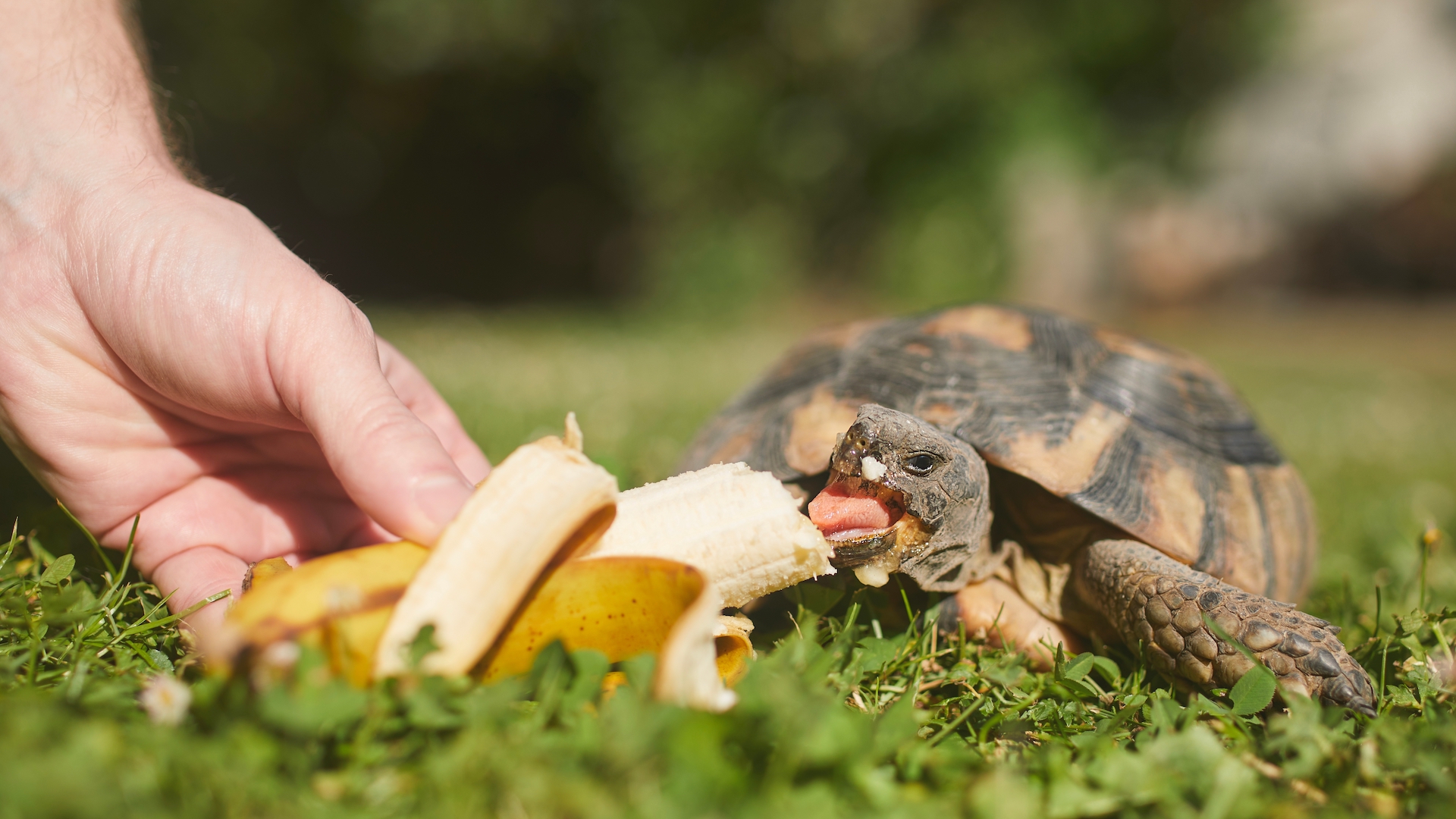
Yes, fruit-eating turtles can eat bananas and even with the skin on – it has added nutritional benefits. However, while the potassium boost is good, bananas should be offered in strict moderation as it’s addictively sweet. One fun fact about pet turtles is that they can have a sweet tooth.
14. Reptile stick food
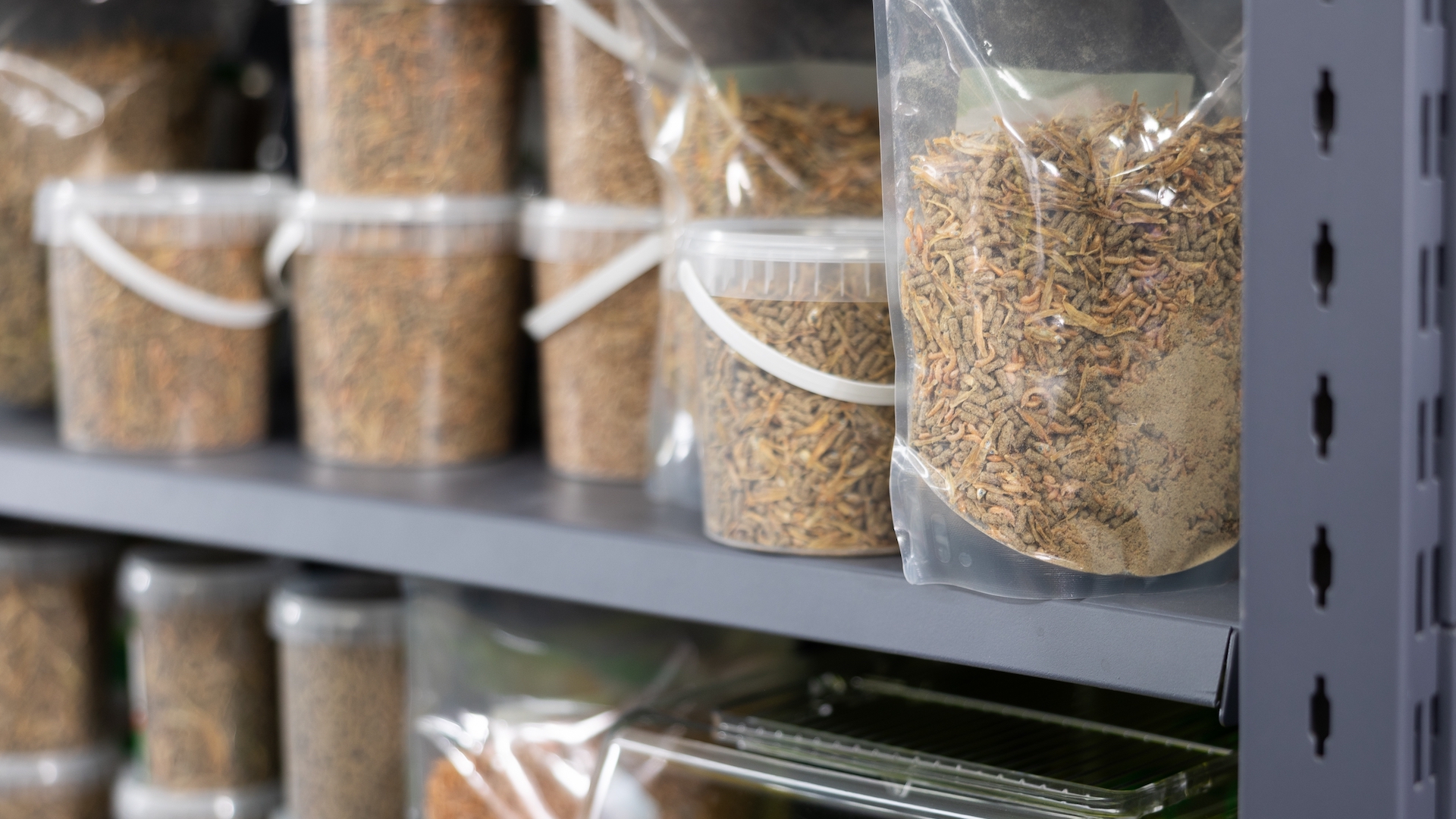
Floating food sticks are a staple for aquatic turtles, who benefit from the precise nutritional content they provide. They’re specially formulated to meet reptilian needs, with high-quality protein, amino acids, calcium, and vitamins – and they’re designed to be tasty.
15. Bloodworms
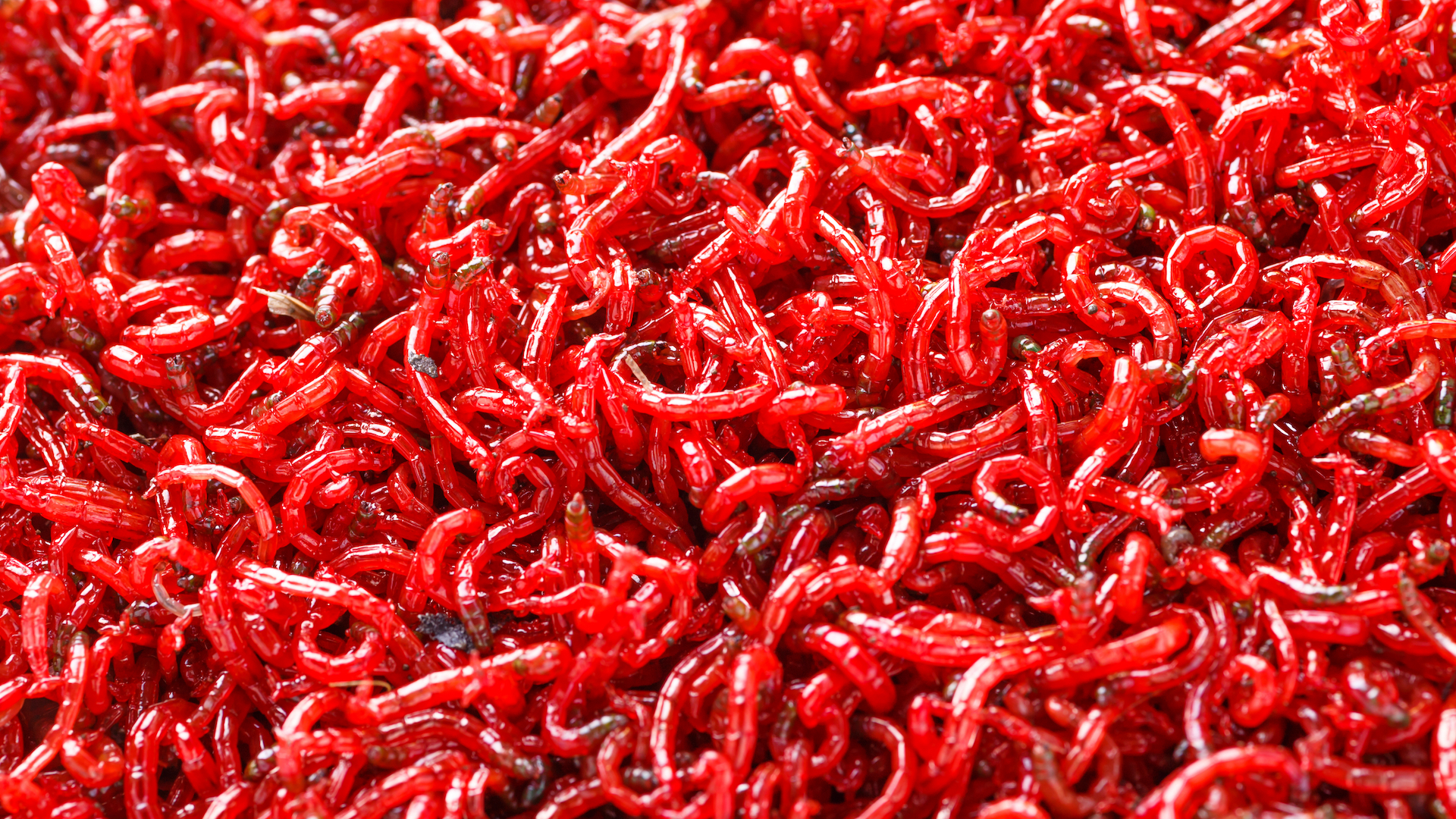
Bloodworms are a great protein source for many types of reptiles and fish, including aquatic turtles. You can feed it live – just watch them wriggle – or in tiny frozen blocks which you defrost before dropping in the tank.
16. Daphnia
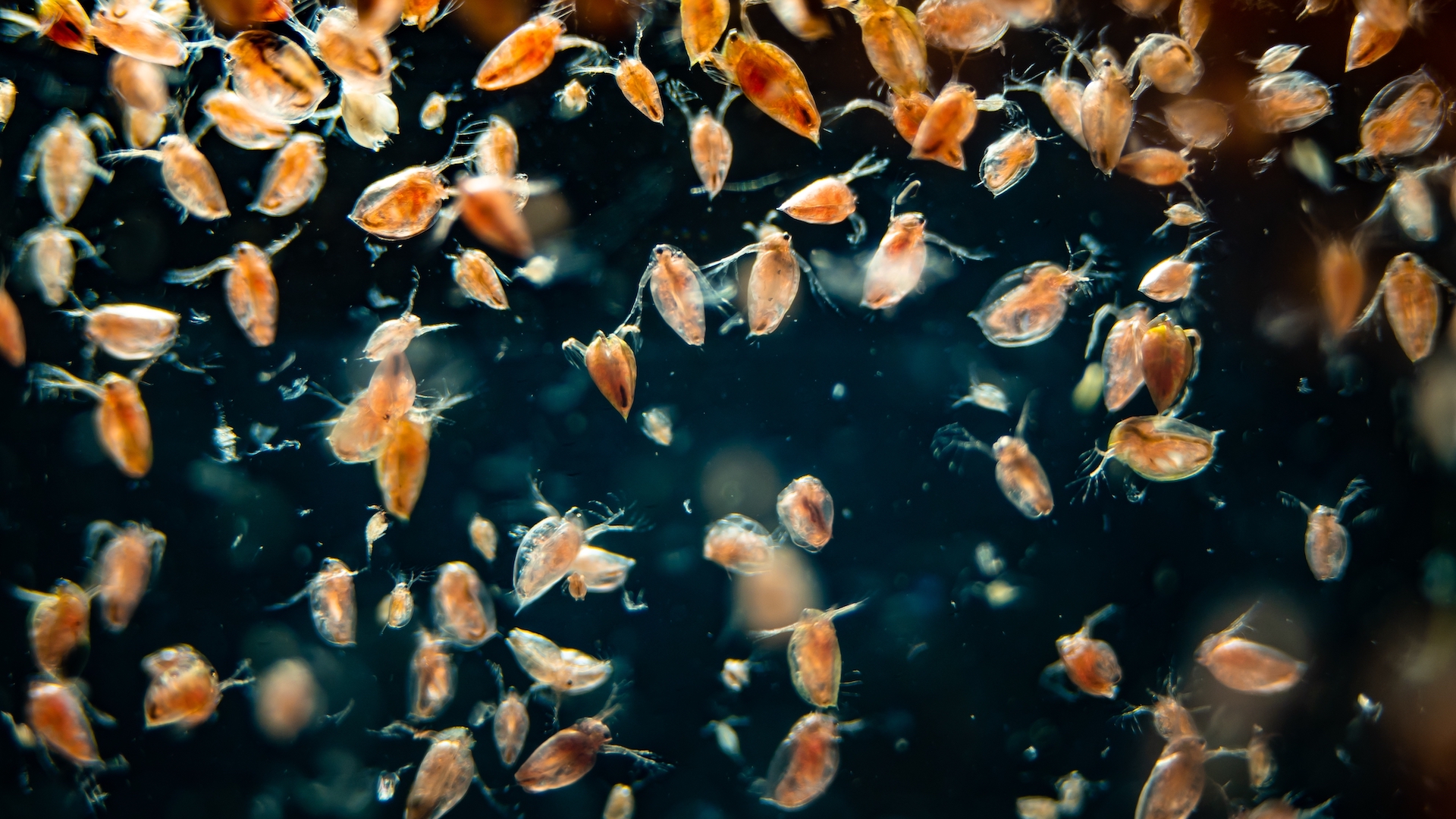
Also known as water fleas, these small planktonic crustaceans are a staple food for growing aquatic turtles. You can feed them live, freeze-dried, or frozen (defrosted). And don’t worry about the flea bit – they don’t have any mechanisms to sting or bite.
17. Roses
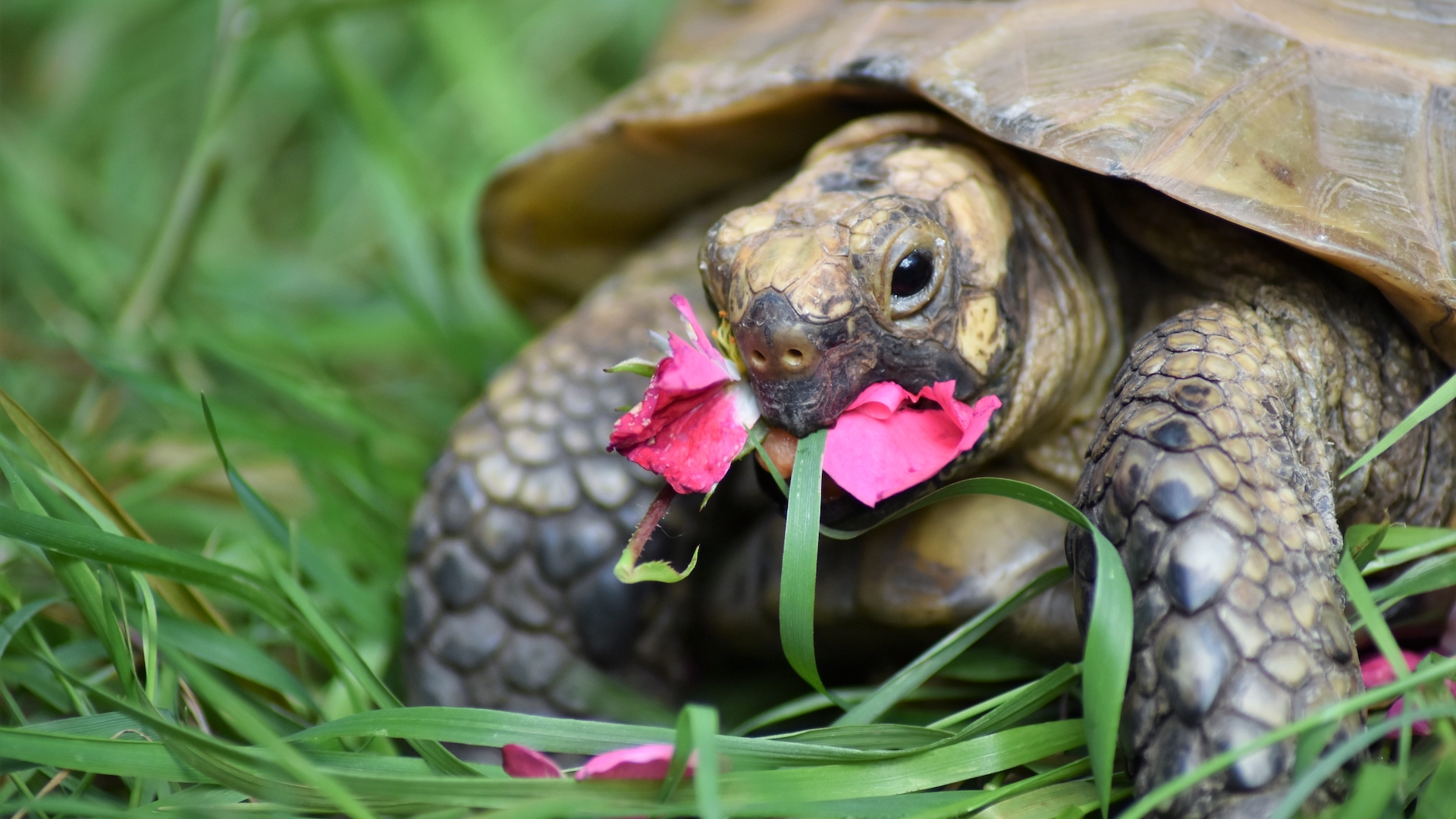
Many varieties of roses are safe for tortoises to eat, such as wild roses, hibiscus (Chinese rose), rock roses, and normal garden roses. This includes petals and leaves. As with all flowers, don’t feed roses directly from florists or garden centers in case they are sprayed with harmful insecticides.
18. Radish
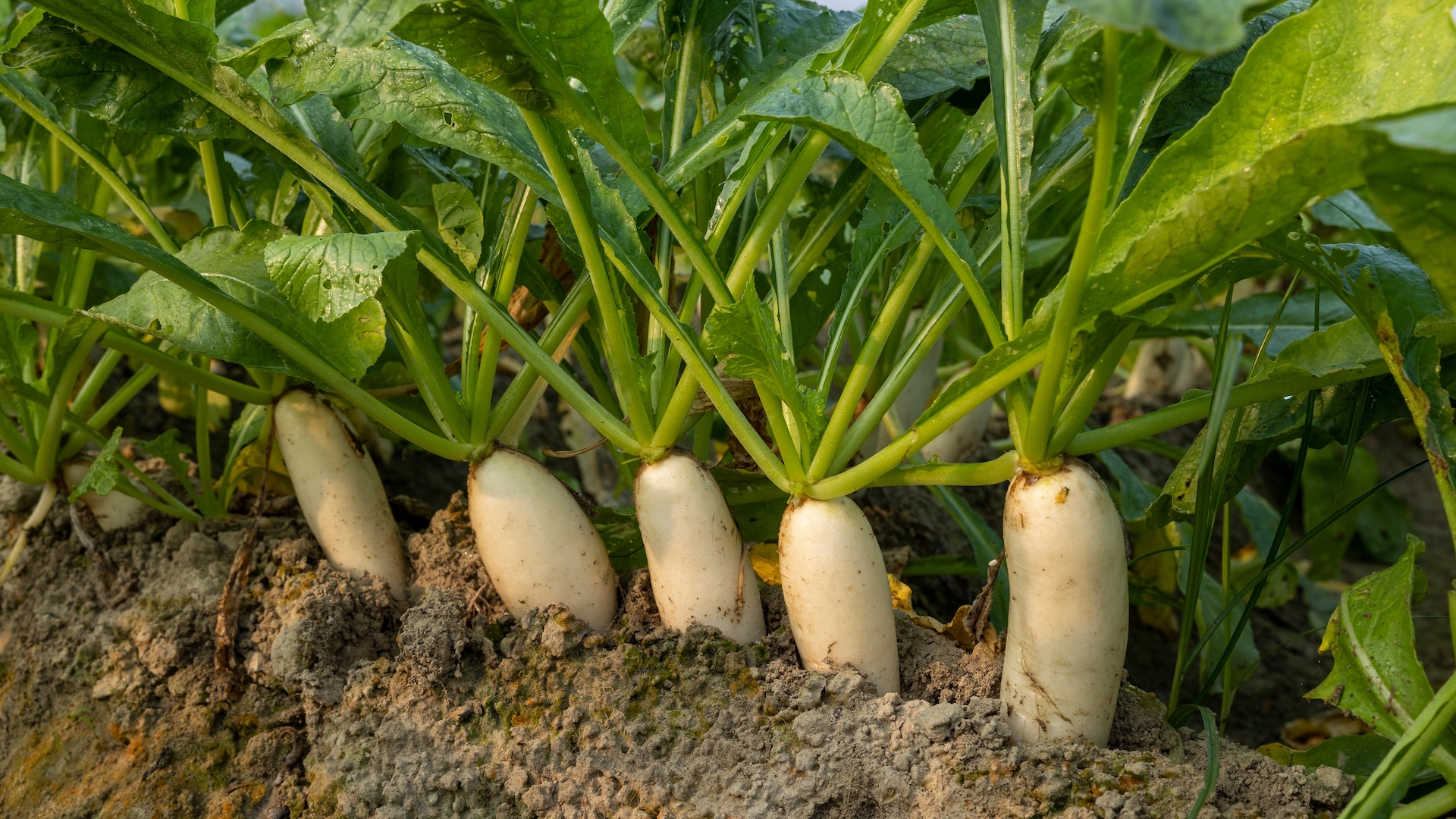
Most kinds of radish – wild, pink, and white – can be fed in moderation to many tortoises. However, this family does contain glucosinolates, which can cause damage if it is a major part of their diet, so stick to small portions.
19. Zucchini
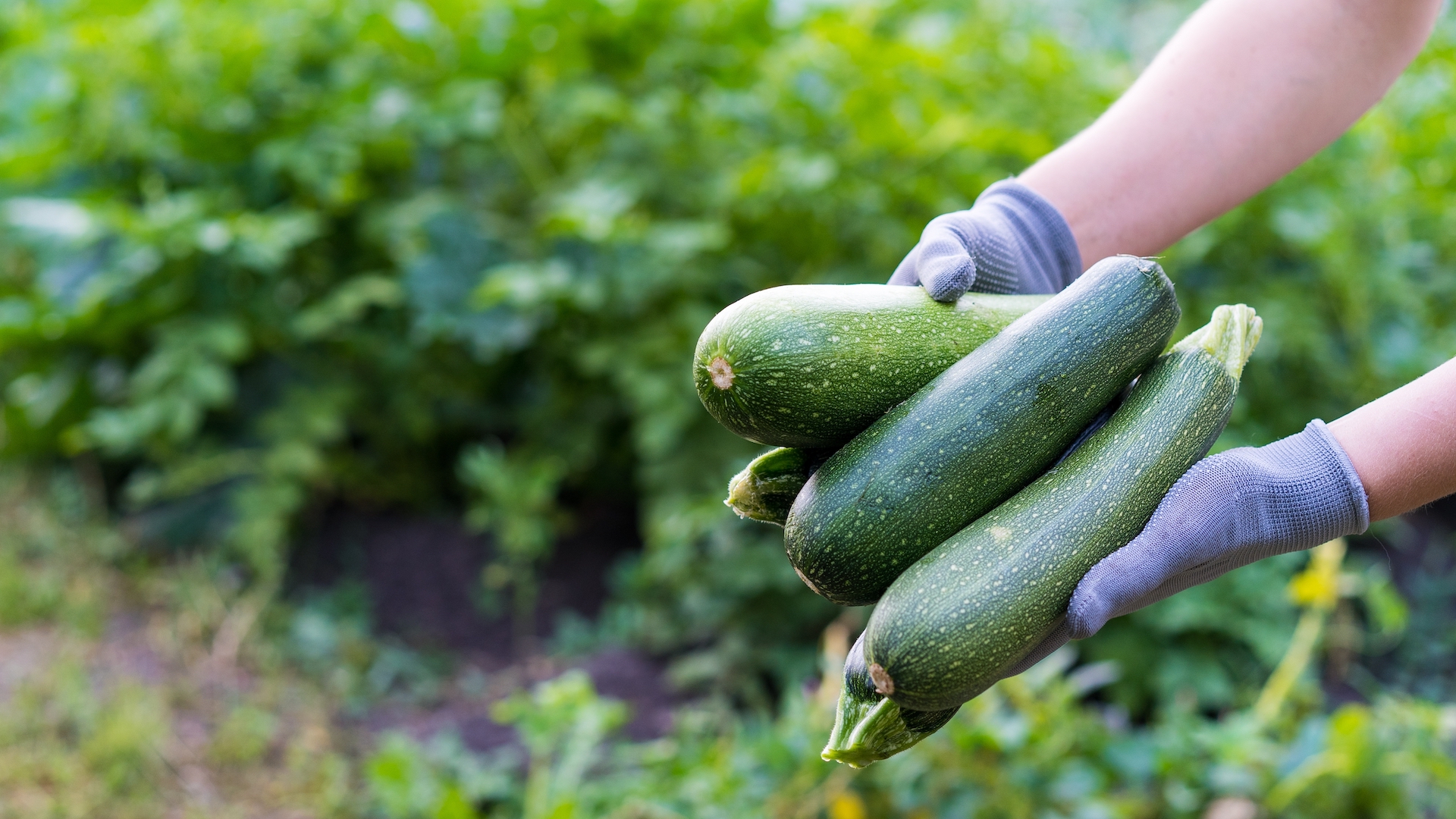
Fruit-eating tortoises can enjoy the main zucchini, while the short-lived flowers are also edible. Many of our shelly friends love the crunch factor.
20. Romaine lettuce
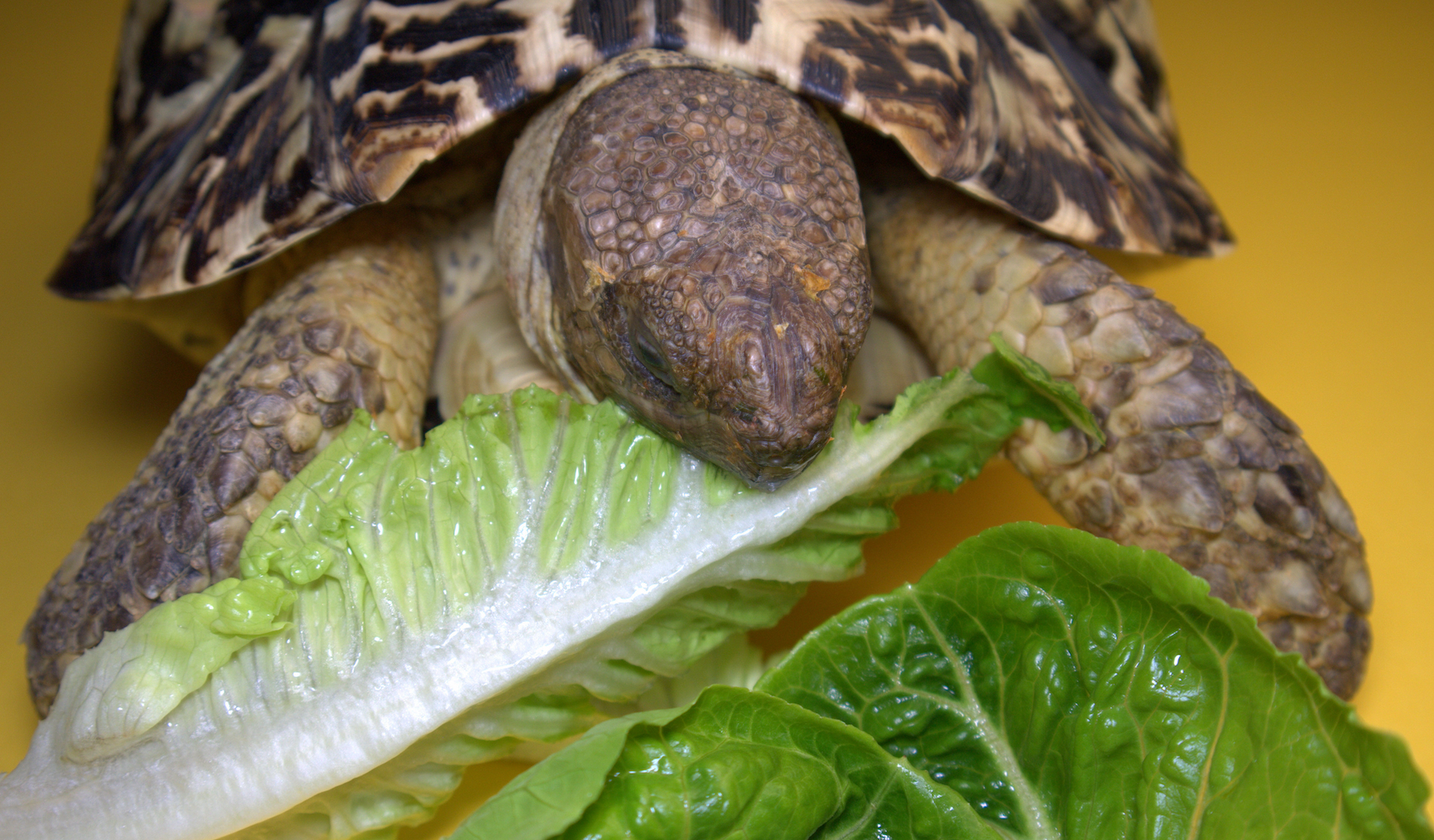
Romaine lettuce has a high water content, and therefore doesn’t offer great nutritional value, but is fine to feed in moderation. In comparison to iceberg lettuce, it contains more vitamins A, C, E, calcium, and fiber, and tortoises tend to enjoy the texture.
21. Feeder fish
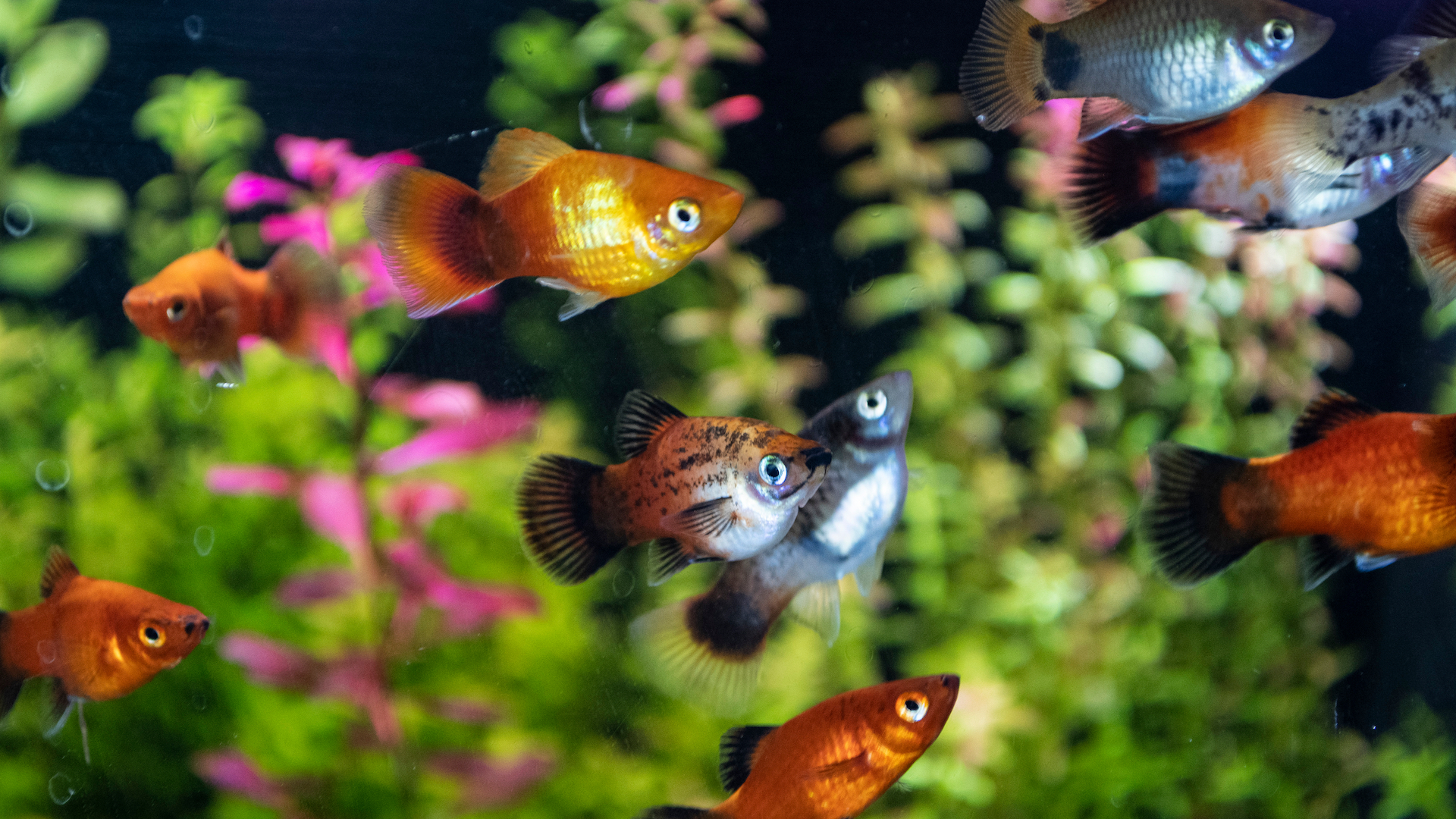
Live fish offer environmental enrichment for an aquatic turtle’s dinner, mirroring what it might find in the wild. Feeder fish such as guppies, platies, and swordtails are ideal, while oily fish should be avoided due to their high levels of unsaturated fatty acids.
22. Eggshells
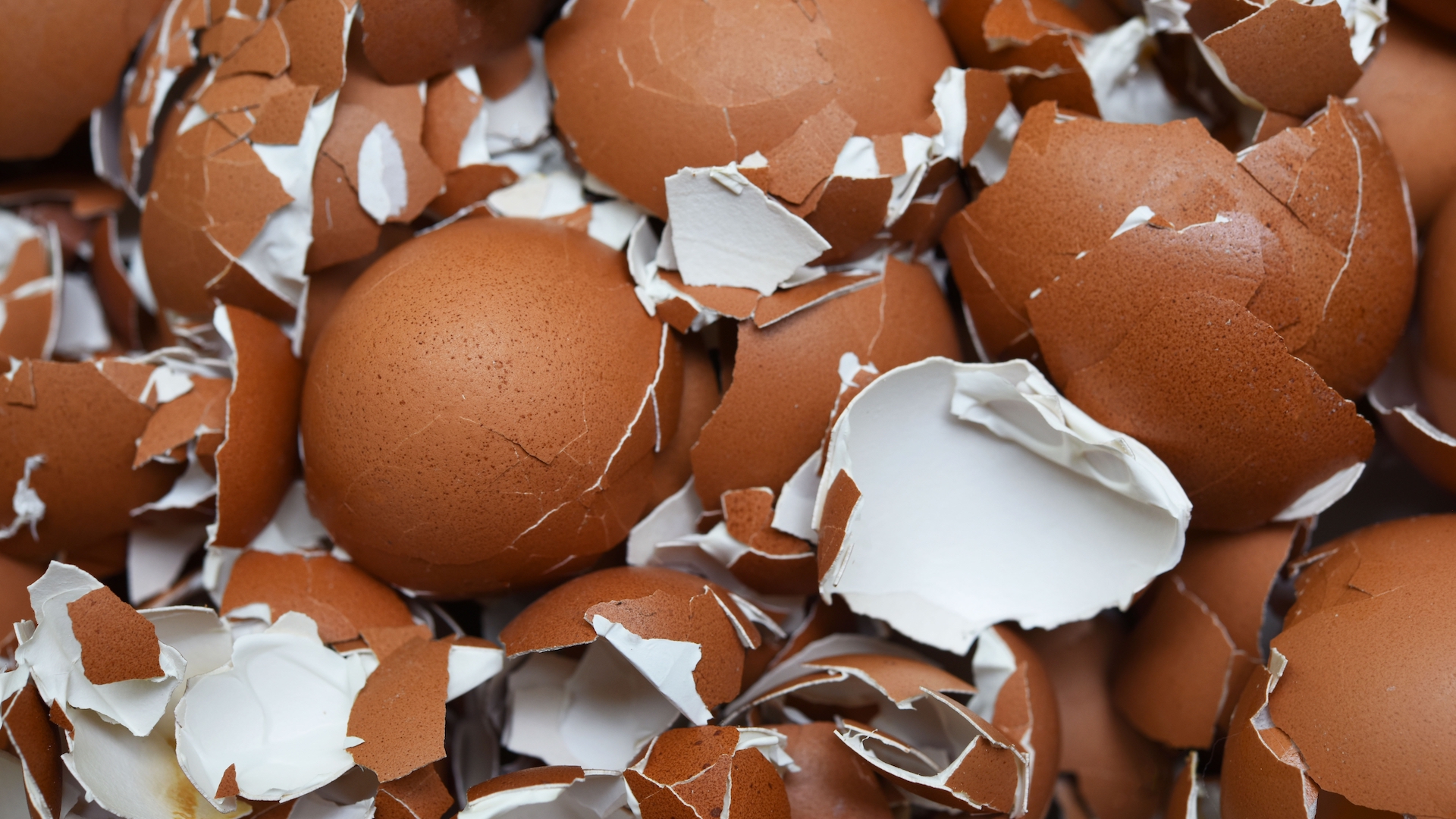
Did you think eggshells were just good for making compost? Turns out the high calcium carbonate content of a boiled eggshell helps tortoises build strong shells. Shells for shells.
23. Prickly pear
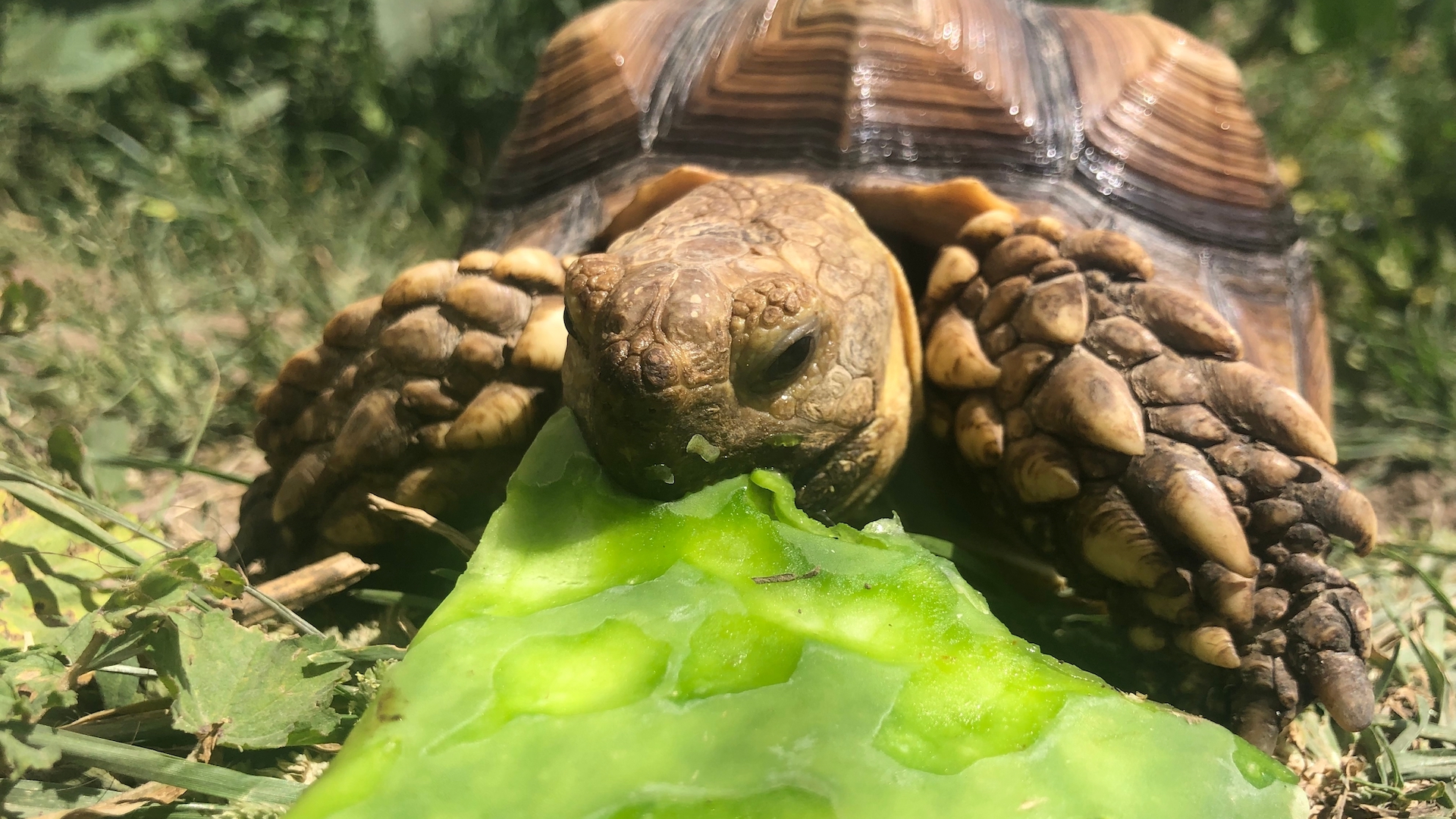
The pads of prickly pear cacti are good for turtles to eat, being high in calcium, and they tend to relish the taste and texture. This variety of cactus tends to be less spiky than others, so more palatable.
24. Grass
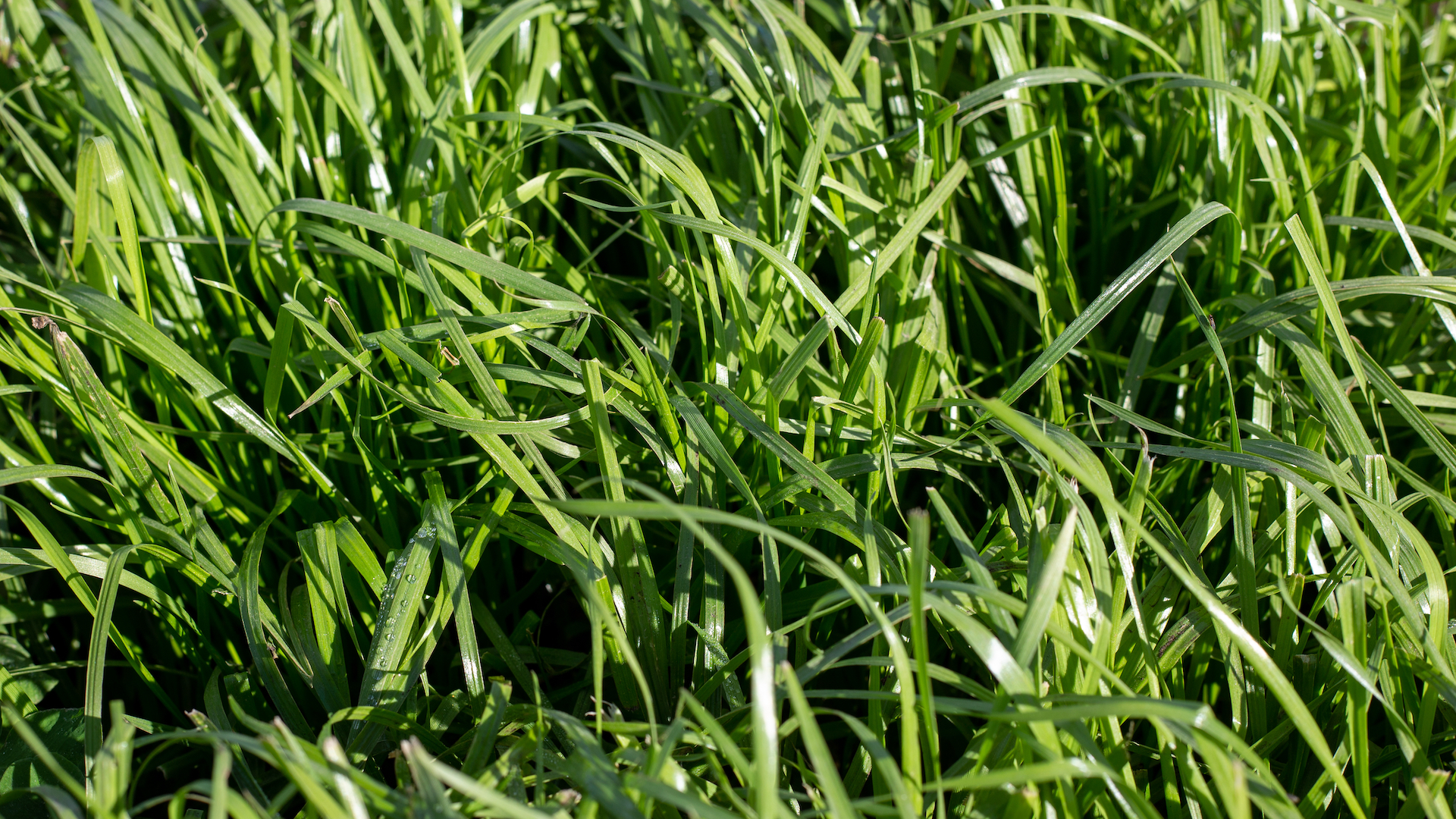
Many types of grass are safe to feed turtles, from pampas, barley, and wheat to oats, cats, timothy, and fescue. In fact, for land turtles grass is a staple. Although it isn’t massively nutritious it’s good for grazing. Just make sure it has no fertilizer or insecticide lingering.
25. Clover
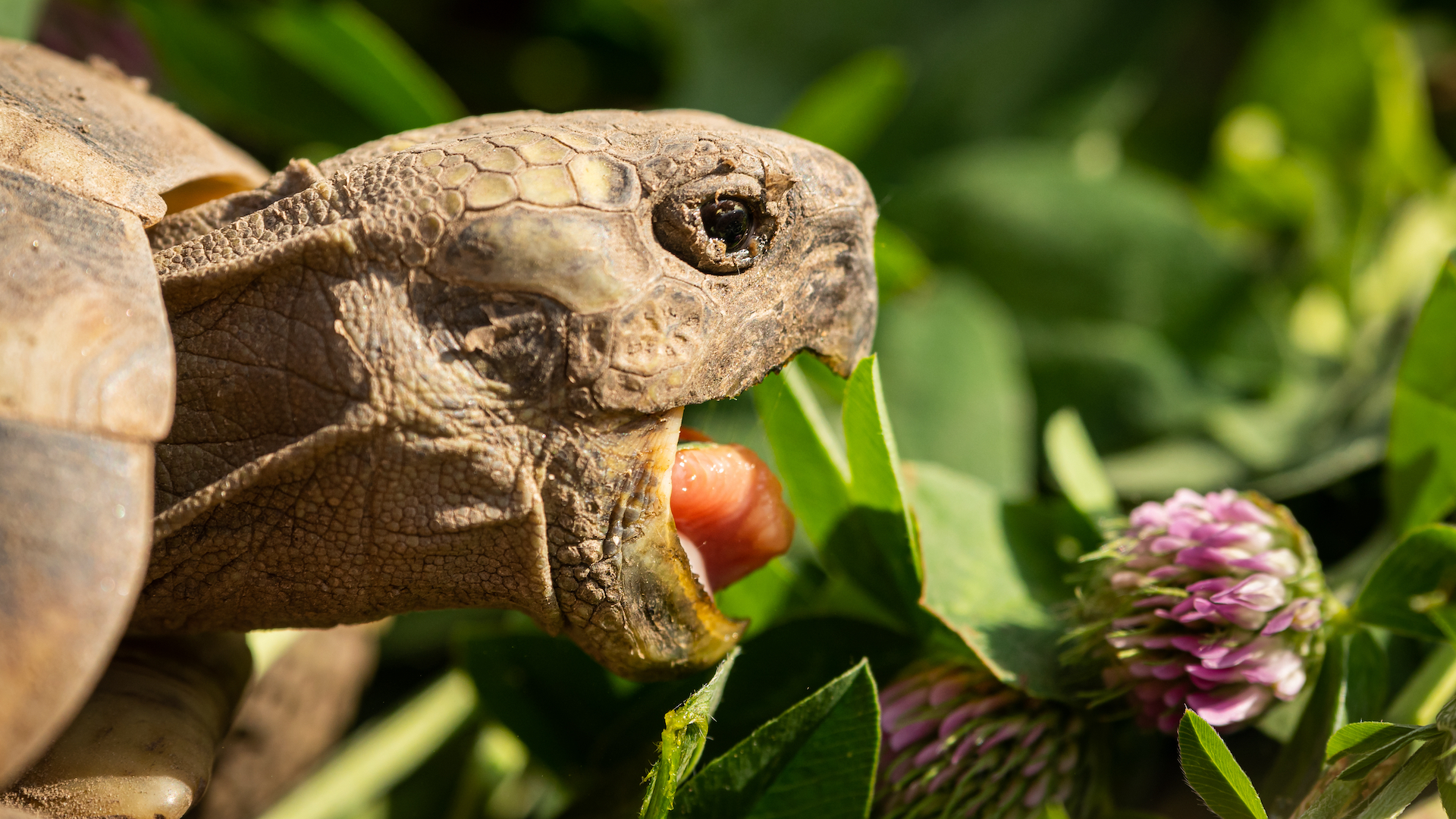
Red and white clover contains a lot of protein, but it’s safe to feed in moderation (except for Mediterranean tortoises which require a low-protein diet for healthy shell growth). Clover also contains nutritious vitamins, including A and B.
26. Snails
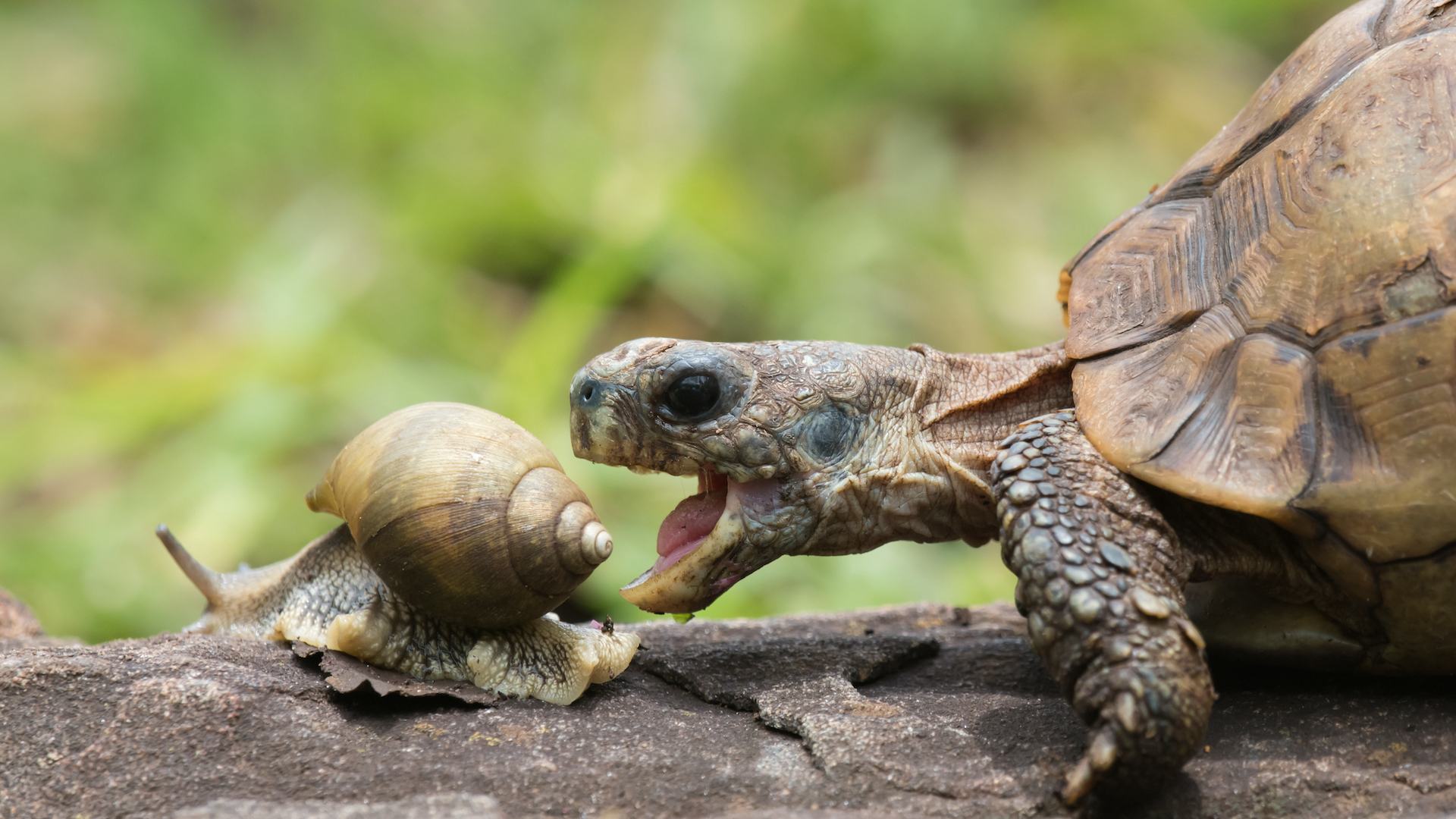
Aquatic turtles in particular benefit from eating snails, which provide nutritious calcium for their shell growth. The caveat is that they do not carry parasites, which is fairly common. Snails are a tasty delicacy for a turtle – anyone for escargots?
27. Grasshoppers
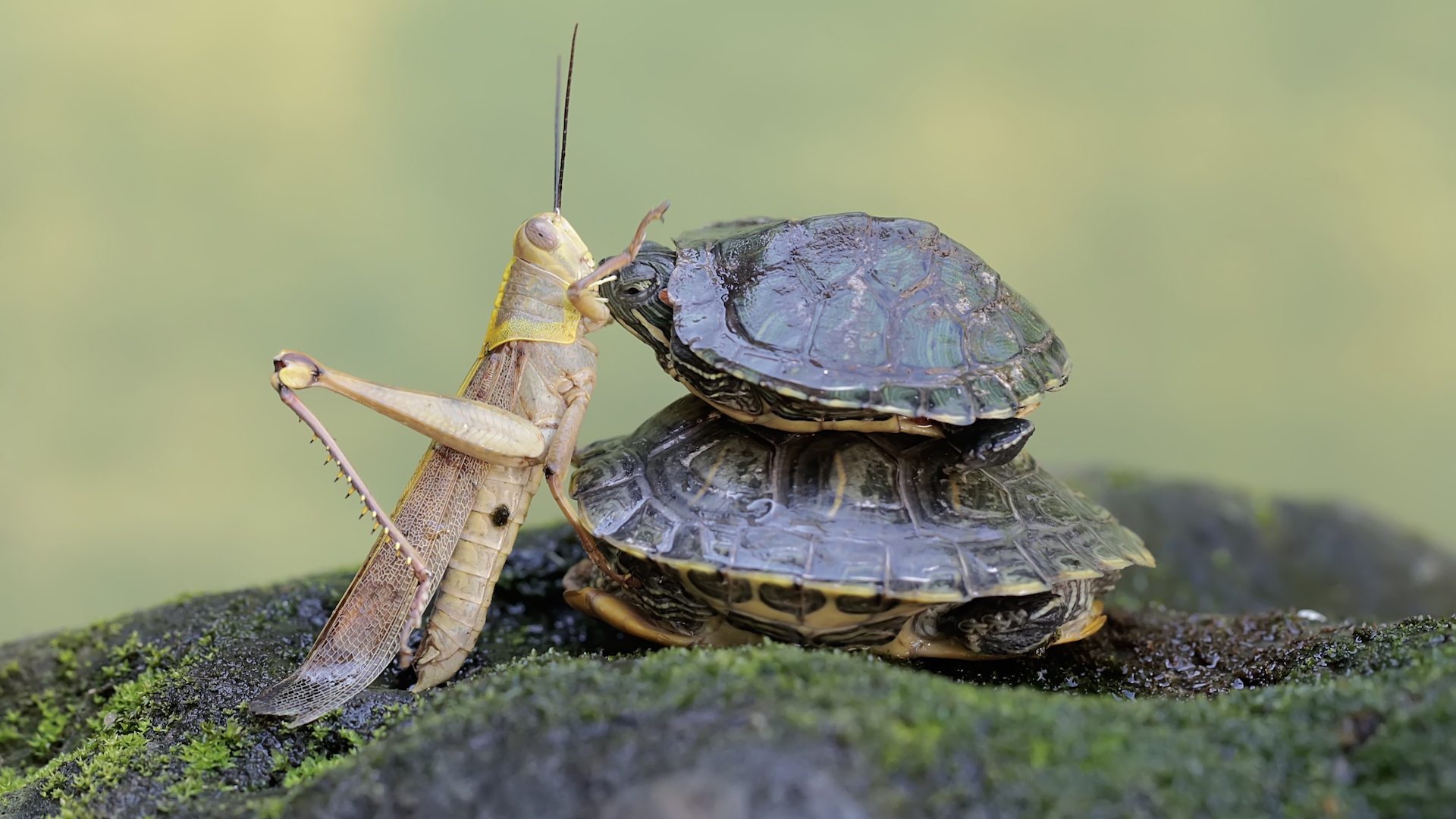
Grasshoppers can be bought in a tub as a supplementary treat for your turtle, providing a naturally high-protein food, which they tend to adore.
28. Cucumber
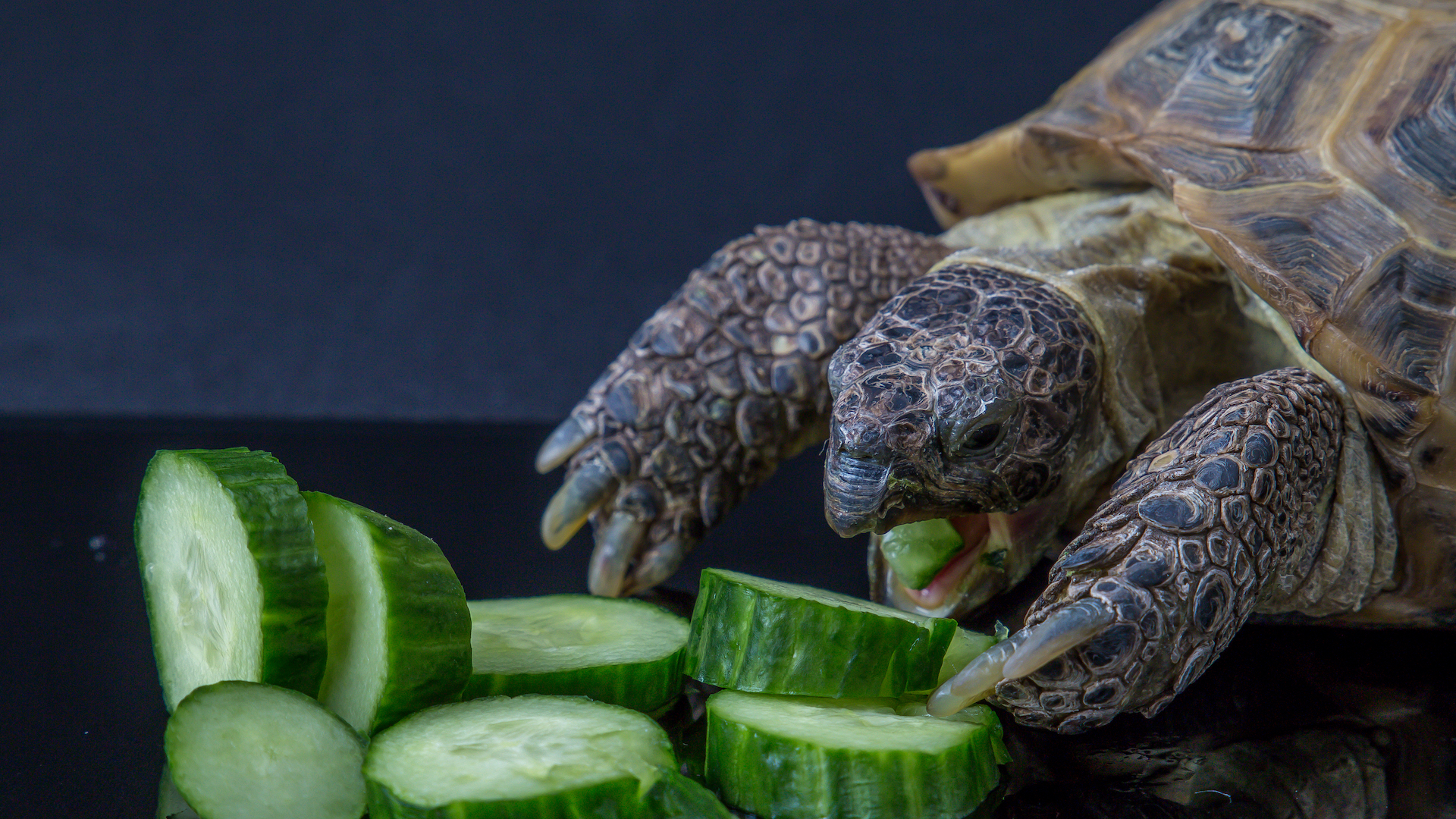
Crunchy but watery, cucumbers offer little in the way of nutrition – but they do contain some fiber, minerals, and vitamins. Where they are really valuable is in helping hydration or hiding meds as they make a popular treat.
29. Mango
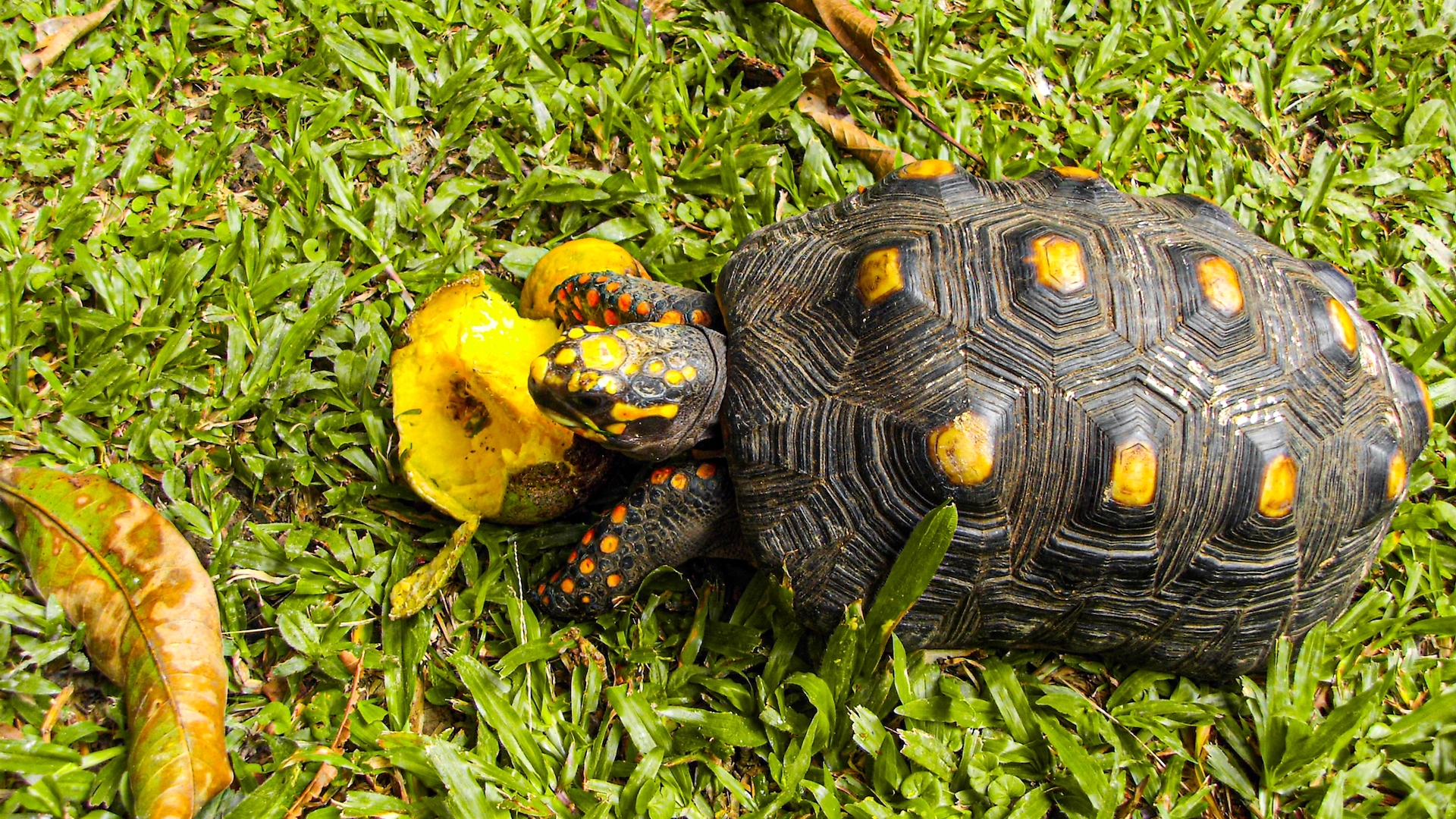
It’s no surprise that fruit-eating turtles love mangoes – who doesn’t enjoy their exotic, sweet, and juicy taste? It’s sticky and contains a lot of sugar, so reserve it for special occasions.
30. Apple
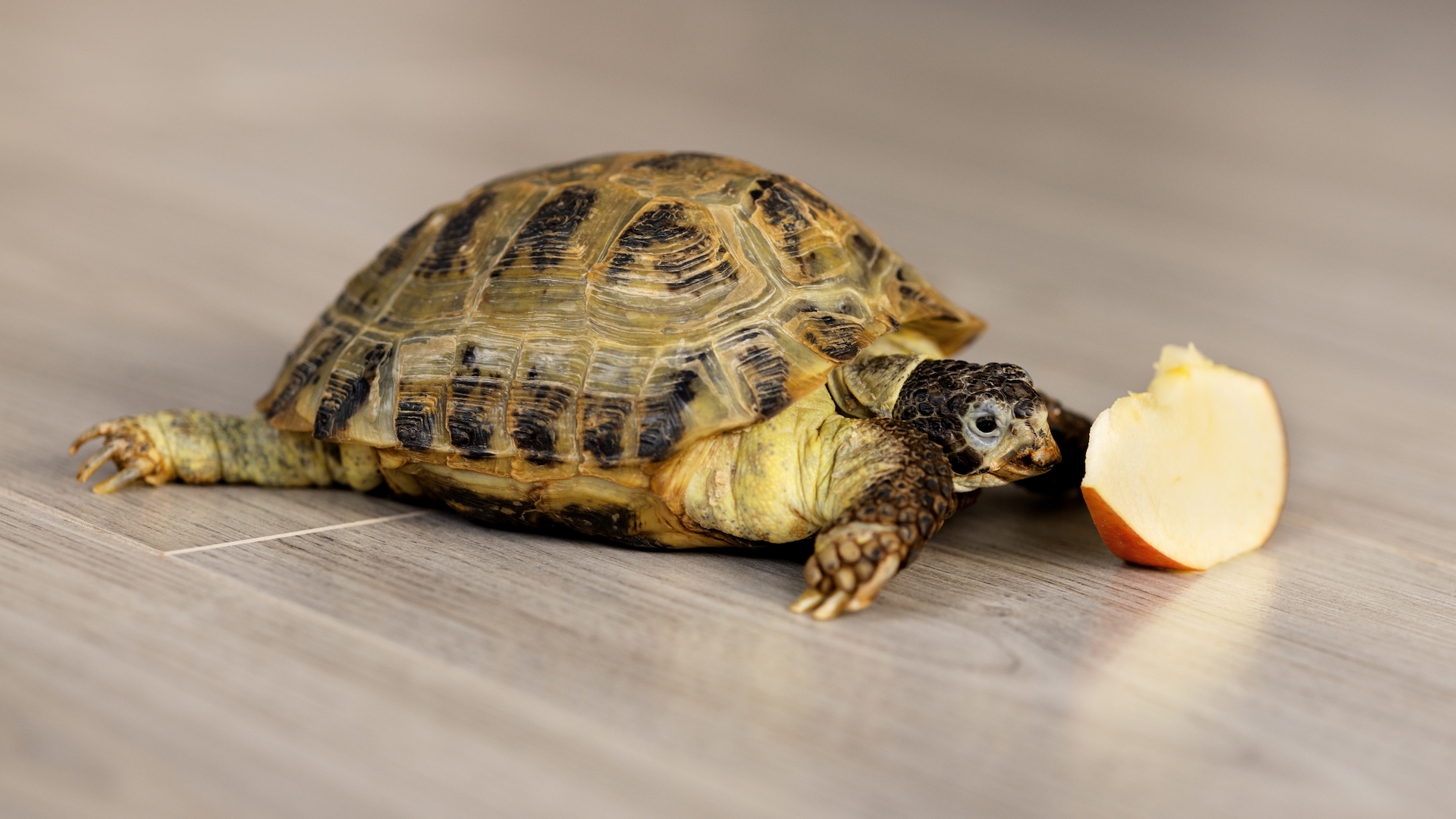
Apples should be fed sparingly, but they go down extremely well as a sweet morsel for fruit-eating turtles. Remove the pips, which contain the toxin cyanide, before offering this delicacy.
31. Slugs
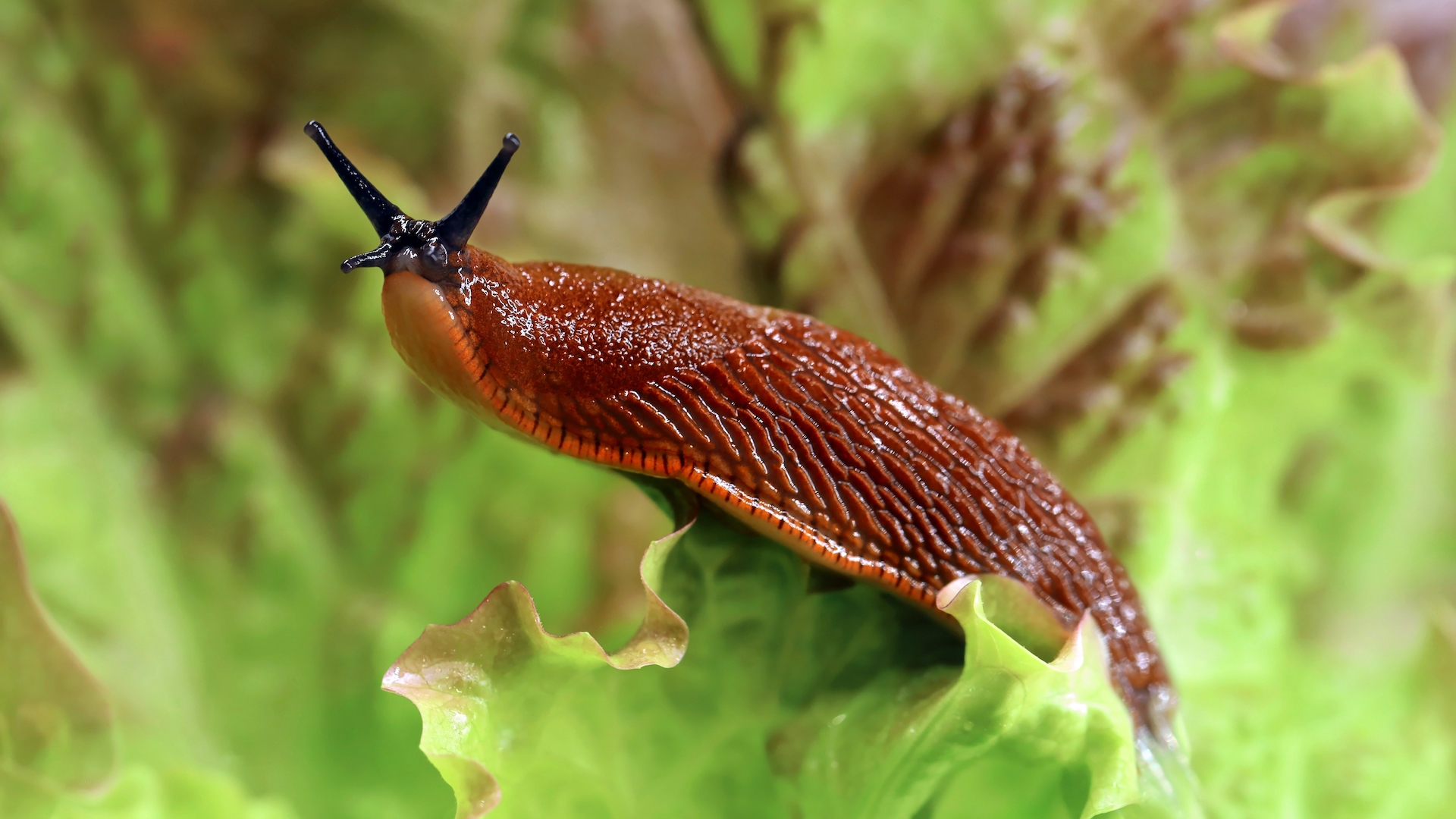
Many box turtle owners report that slugs are their shelly friends’ favorite food. At one time, these turtles were even kept in gardens to control the slug population. These juicy creatures actually make a nutritious addition to the diet, thanks to their protein, vitamin, and mineral content – and they even pack a quick hydration boost. However, they can carry parasites and might have had exposure to pesticides.
32. Deadnettle
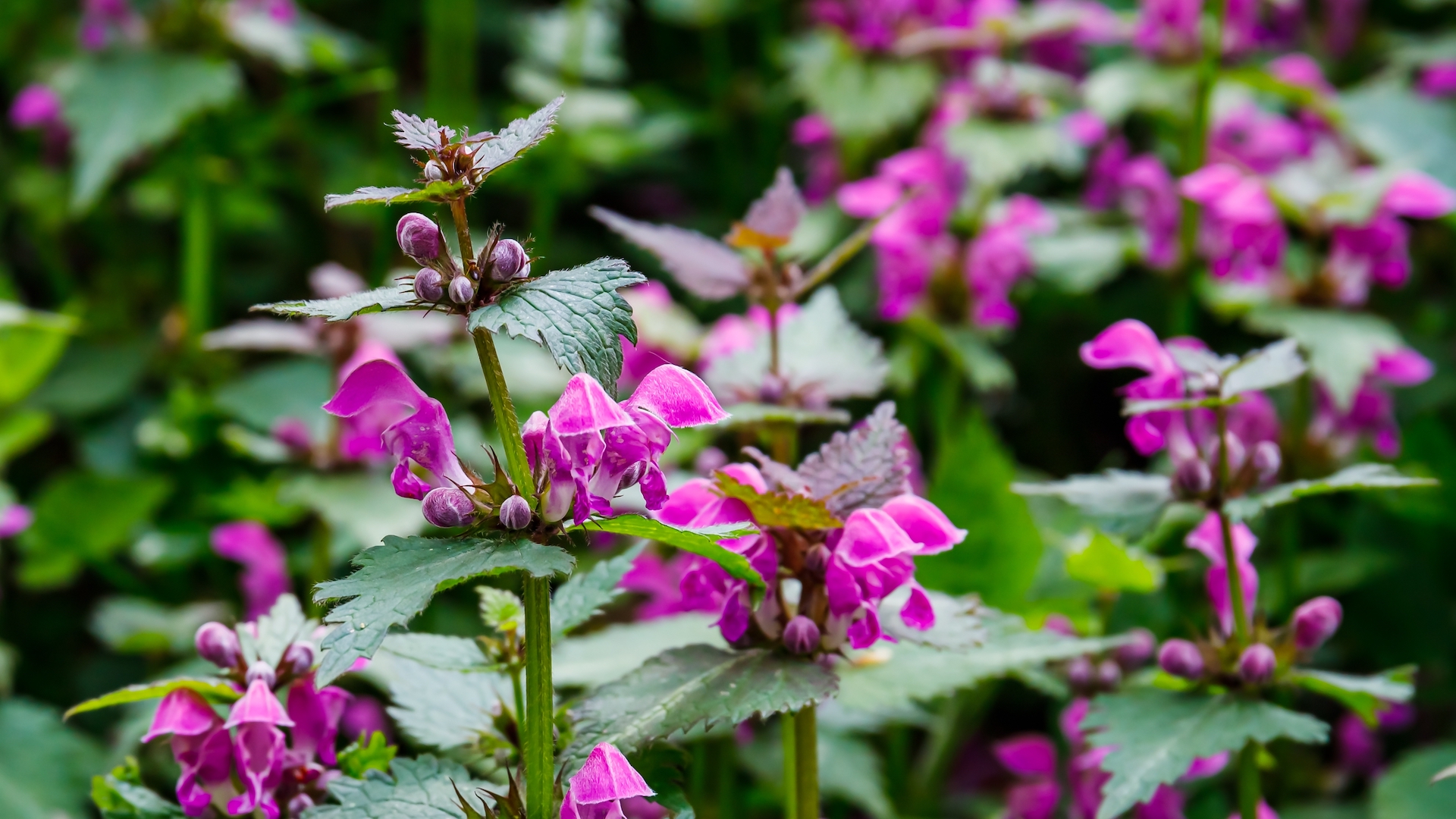
Deadnettle – purple, yellow, spotted, or white – is a safe food for tortoises, but don’t confuse it for the very similar henbit, which is not good to feed. Not all turtles love deadnettle, but it provides iron, and vitamins such as A, C, and K.







